Dear Steemit friends:
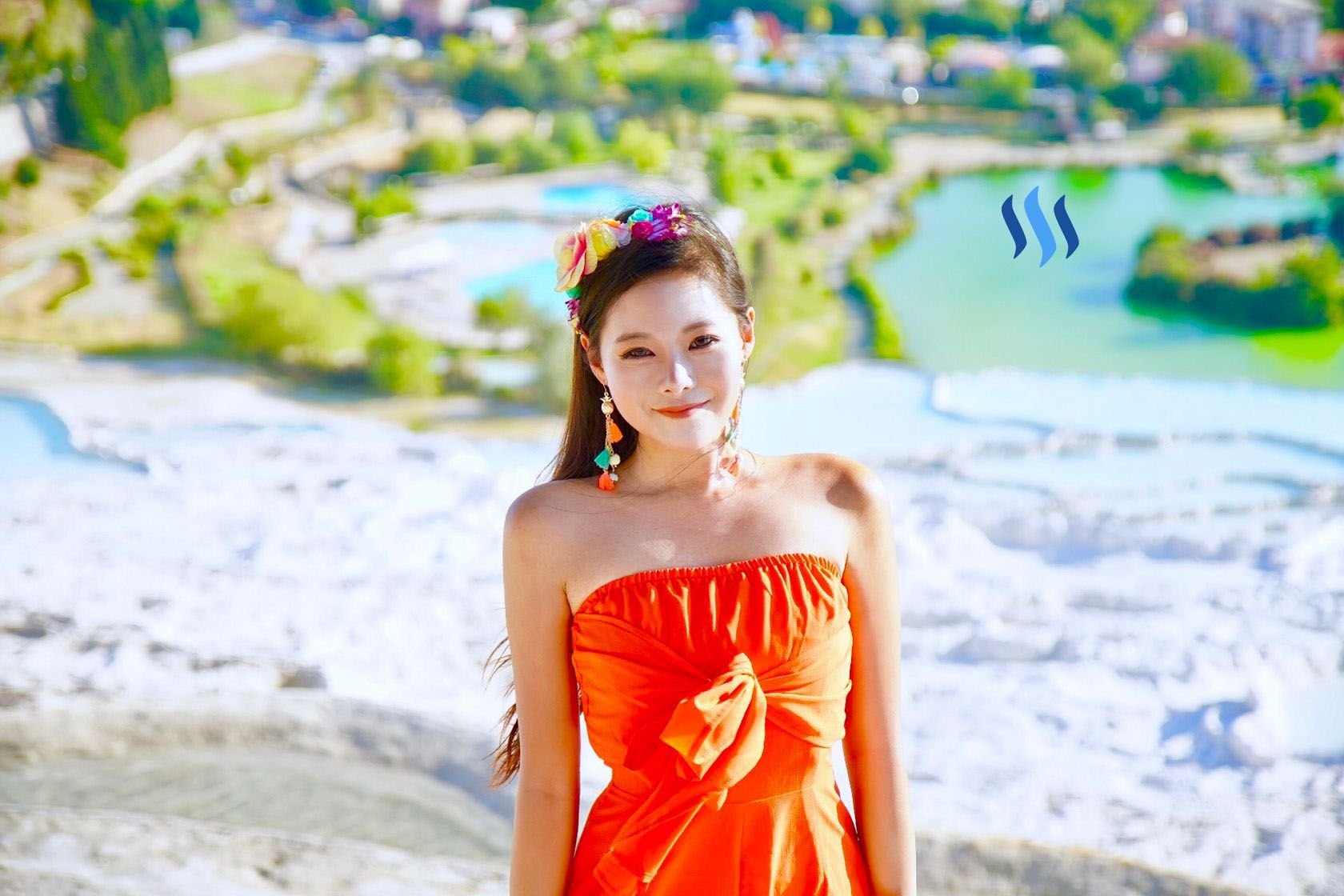
Today, i'll be introducing one of the most spectacular locations in Turkey that is Pamukkale. In Turkish, Pamukkale literally translates to "Cotton Castle" and that is because the natural travertine terrace rock formations look very much like the walls of a castle except made from cotton!
Pamukkale is located in the Denizli Province about 120 miles east of the ancient city of Ephesus. From Selcuk, you have a number of options to travel to Pamukkale, you can take a train to Denizli or take one of the many coach services from the Selcuk bus station. My original intention was to take the train in the morning and arrive in the afternoon just in time to visit Pamukkale. However, I missed the first train and ended up taking a coach.
You will be happy to hear that the coach service is actually quite pleasant. I was apprehensive at first because of it's seemingly expensive price (30-ish Turkish Lira) but it turns out the service was a near five star experience!

The coach company I went with was appropriately named Pamukkale. The entire journey took just under 3 hours and along the way, you are served ice cream, soft drinks and even snacks! I was certainly very impressed with the level of service coaches offer here and definitely recommend it if you are the kind of traveller that likes a frequent departure timetable running throughout the day.
Much like Ephesus, you have several points of entry depending on what order of things you would like to see.
This is the southern entrance which is a common starting point but will require quite a bit of walking (15-20minutes) to reach the travertines. Here, there is a large car park where the coaches drop off and pick up passengers.
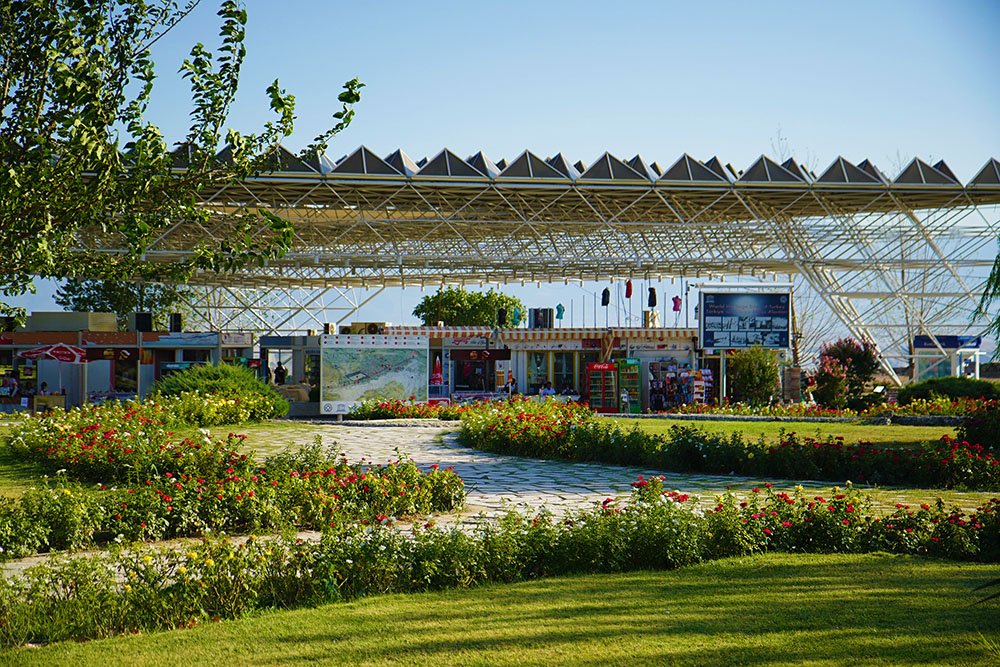
Around the car park, there are some really large rocks and tidy man made gardens. It's almost like a preview of the more spectacular things to come.
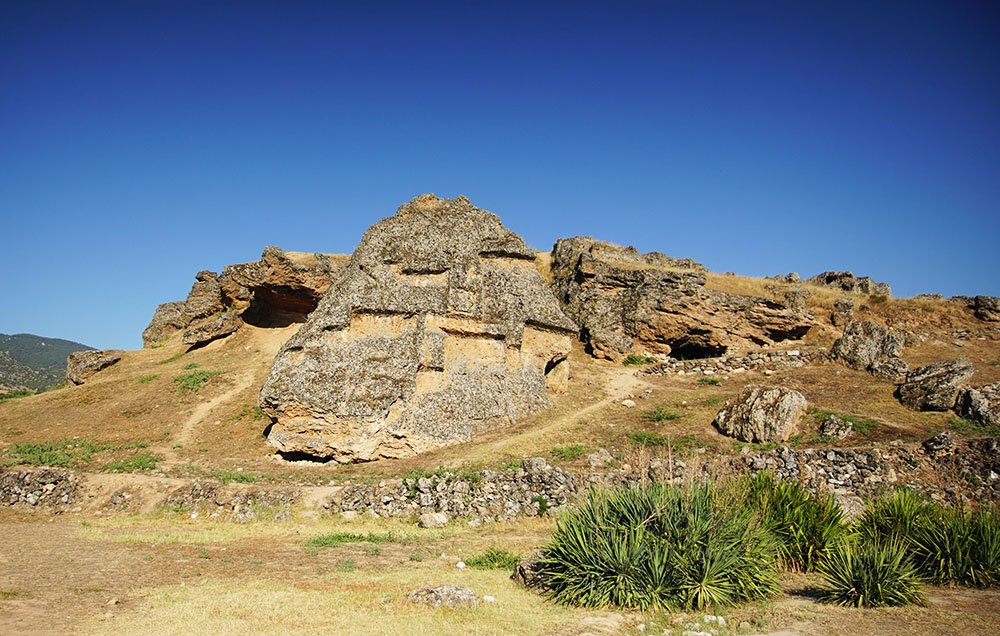
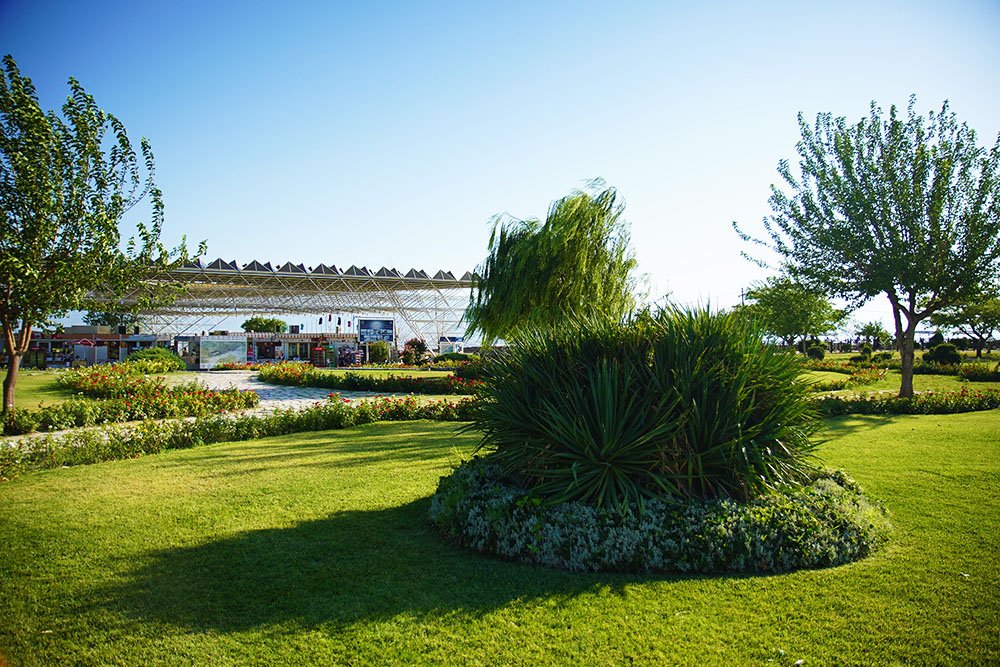

Once we purchase the tickets (35 TL), we can start our 20 minute walk towards the travertines and enjoy some of the marvellous ancient city ruins along the way.
This one is the South Byzantine Gate.
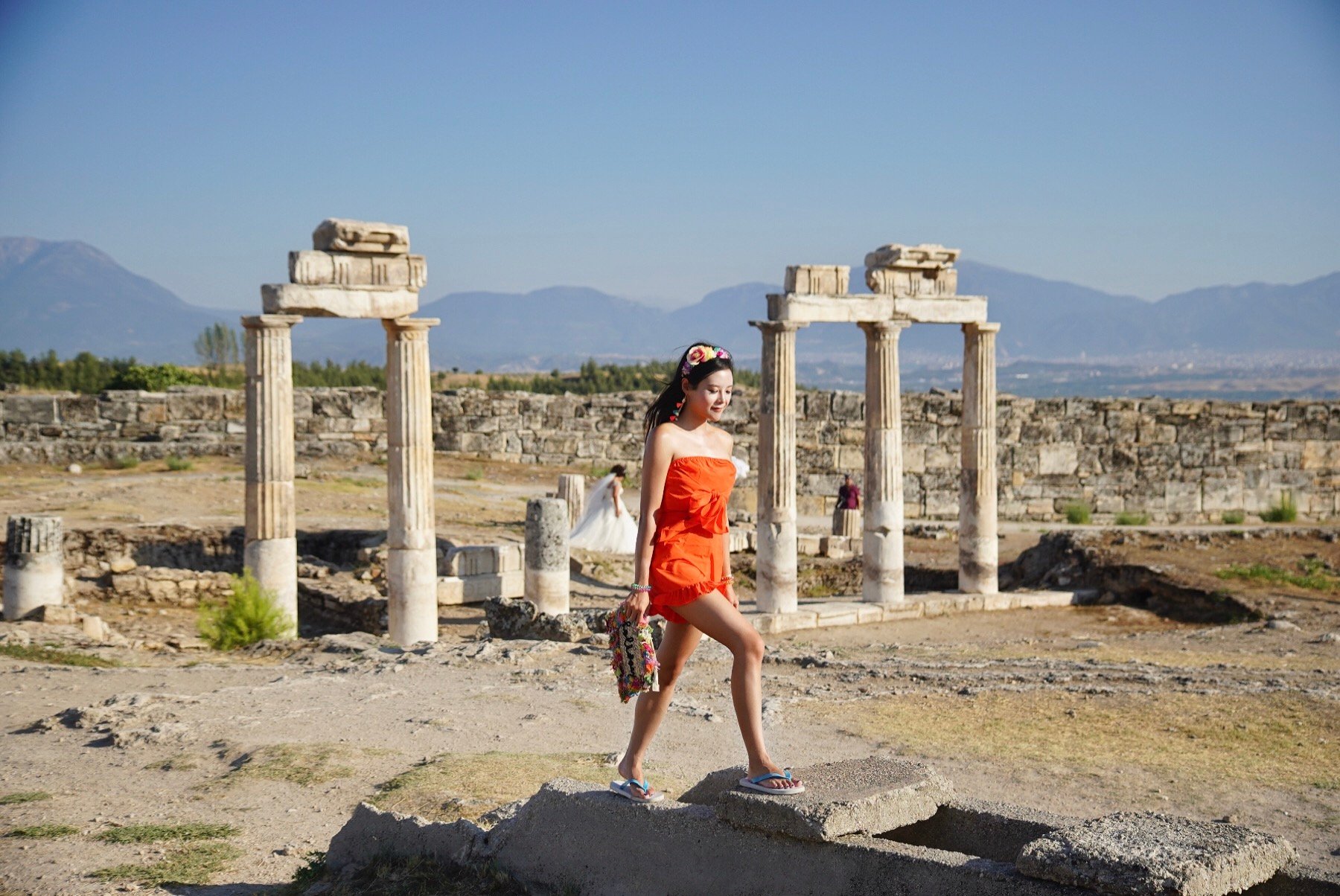
The Byzantine Ramparts

Some breathtaking scenes of the ancient gates and mountains in the distance.
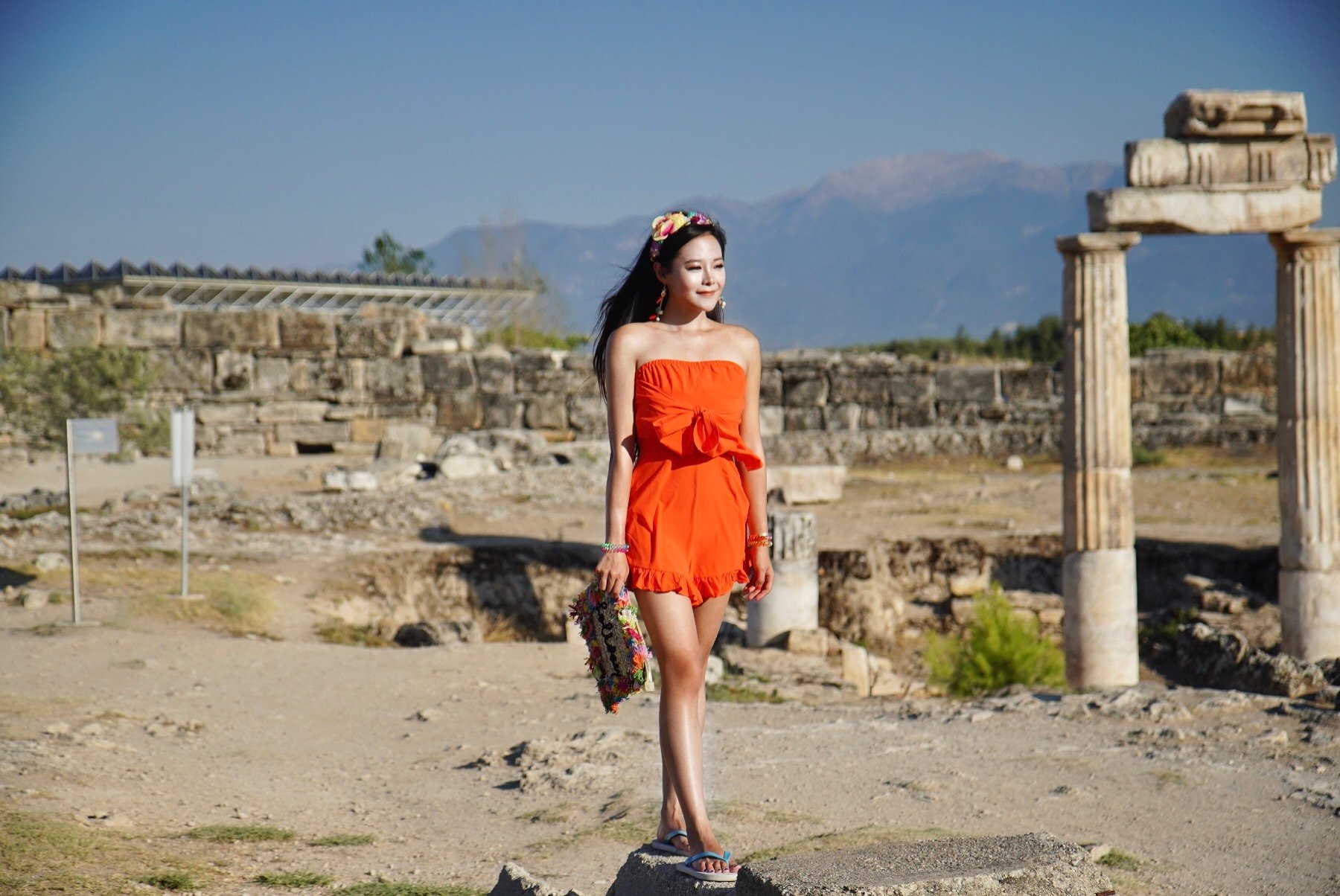
No place would feel complete in Turkey without our furry feline friends.

Finally, we get our first glimpse of the magnificent travertine terrace pools. There is actually a local legend surrounding these travertine terrace pools.
There was a young girl who was unmarried and ugly. As no one wanted to marry her, she decided to commit suicide and she threw herself off the travertine and fell into a natural pool but did not die. Because of the water in the natural pool she turned into a very beautiful girl and caught the attraction of the lord of Denizli while he was passing by. At that moment, the lord fell in love with this young and beautiful girl and they soon got married.
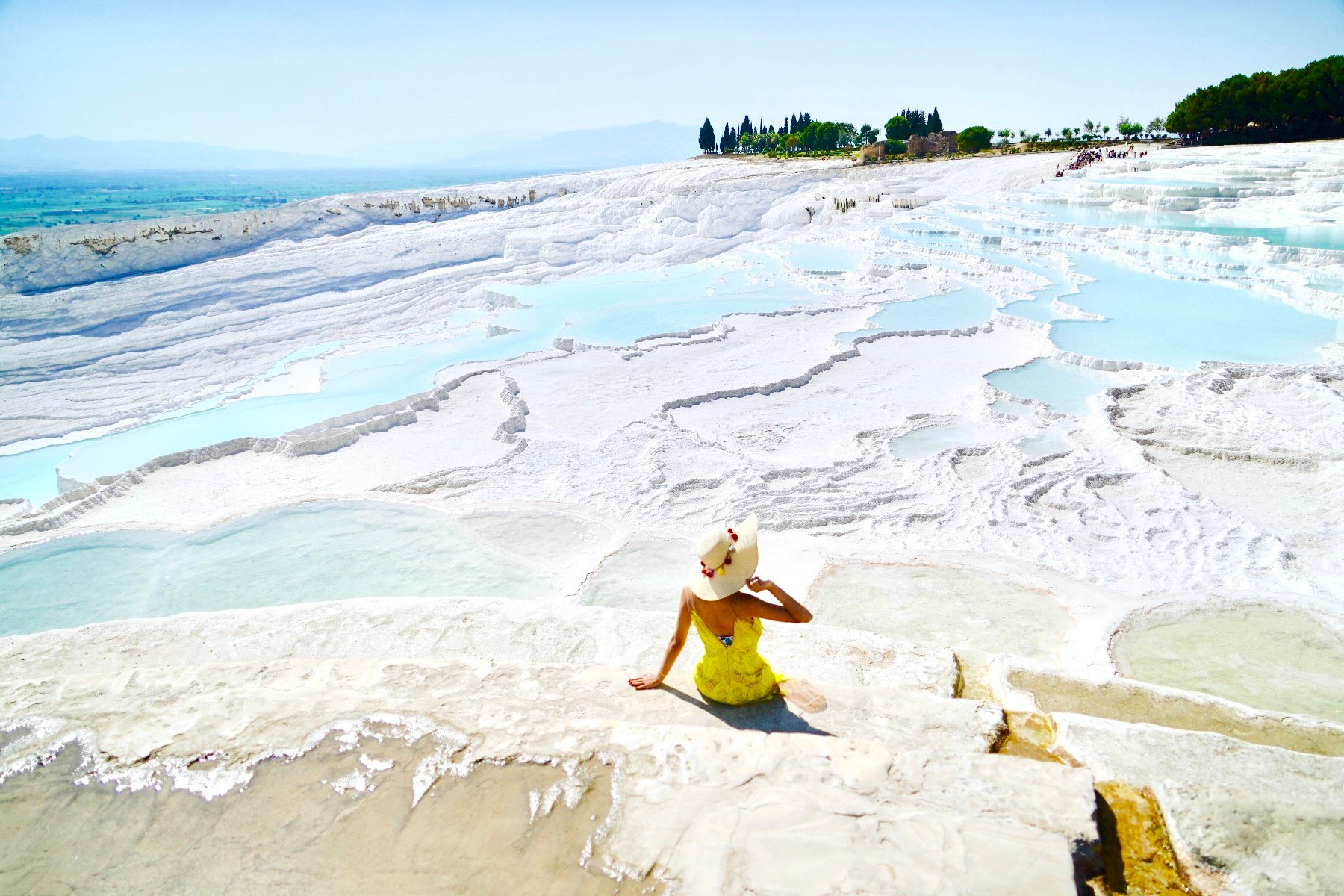
The white cliffs can easily be mistaken for being snow. They are the same pure white colour, and yet, the temperature outside makes it impossible for snow to settle and not melt. This is part of the beauty of the travertines.
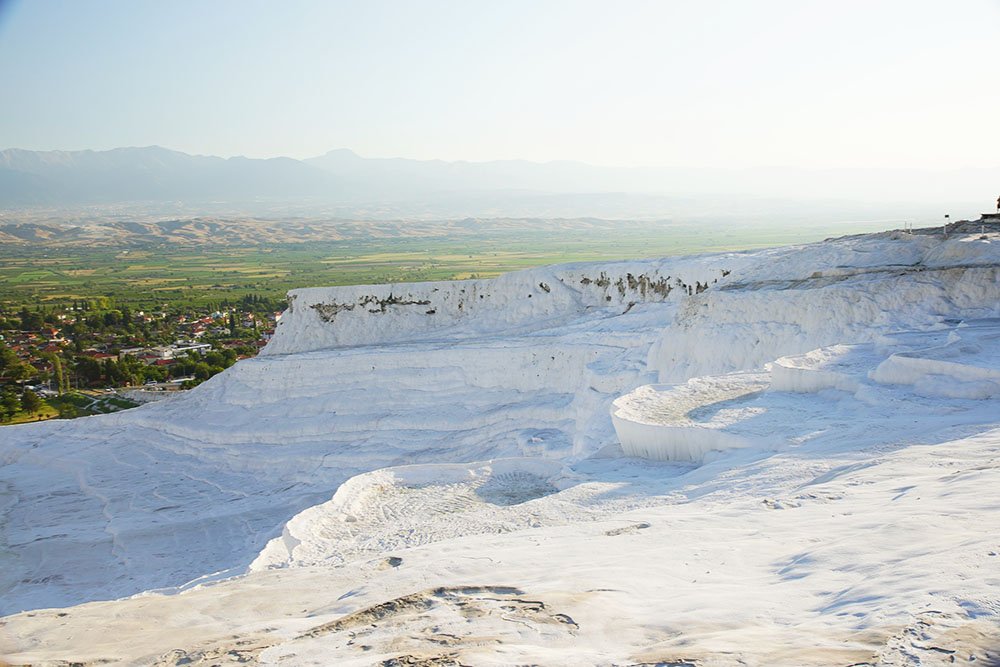
In the distance, you can see the small town of Pamukkale. Many people like to stay there for easy access to the travertines and as such, there are many hotels and restaurants there.

Some parts of the travertine are off limits for parts of the year to preserve them from the hundreds of thousands of tourists who visit each year.
Considerable efforts have been made to preserve this natural wonder including being inducted into UNESCO's list of world heritage sites in 1988.
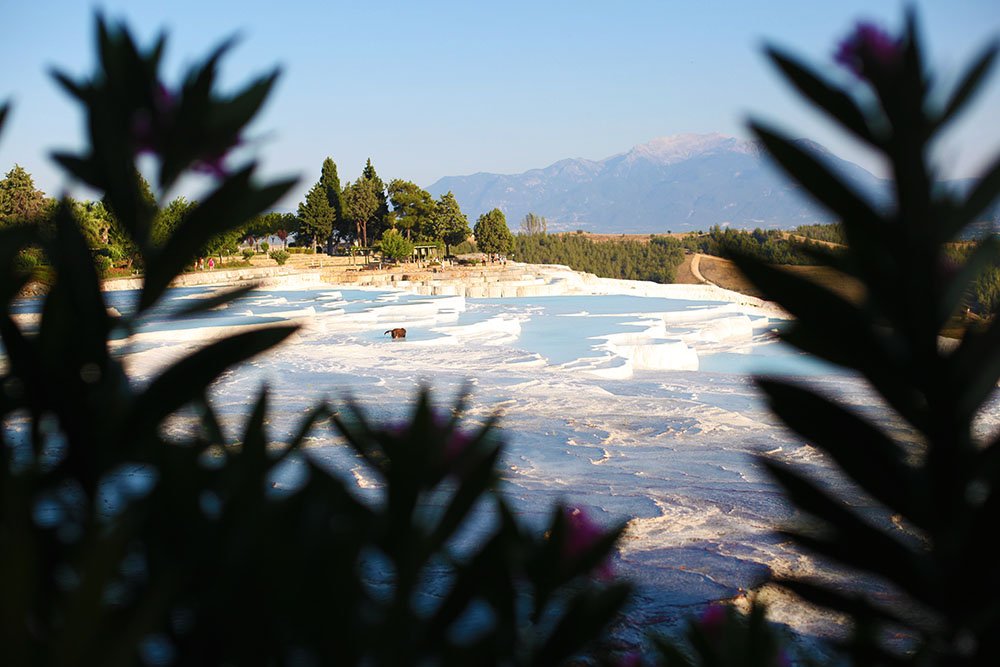
Despite the temperature being over 40 degrees, the allure of taking a dip into the milky pools of water keep everyone and myself motivated.
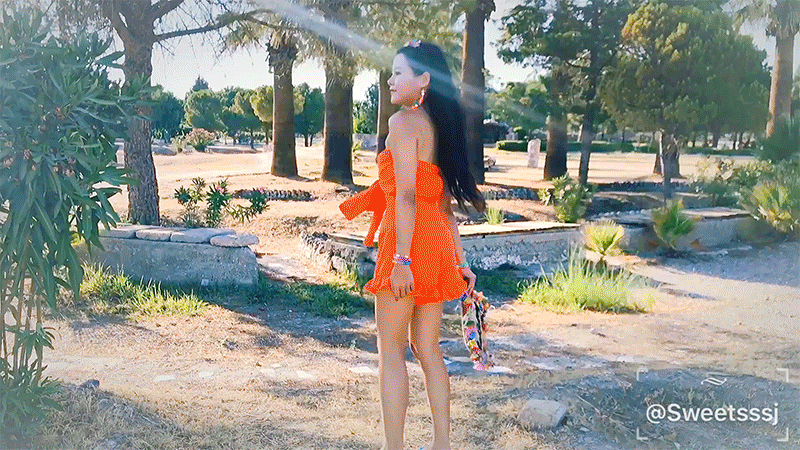
Aside from the stunning views of Pamukkale travertines, people often forget the views of the mountains and valleys in the distance.
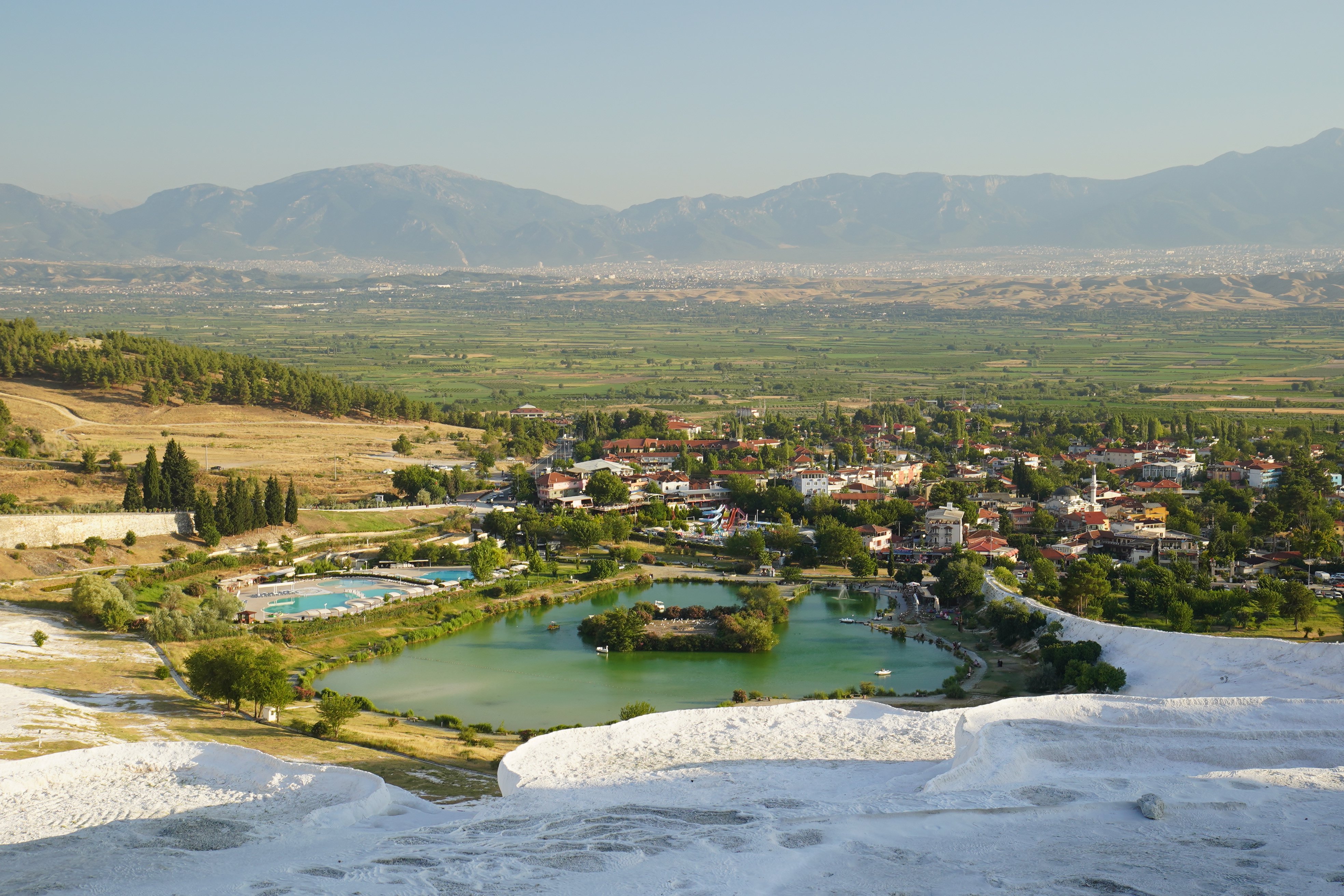
It is almost impossible to take a bad photo here!
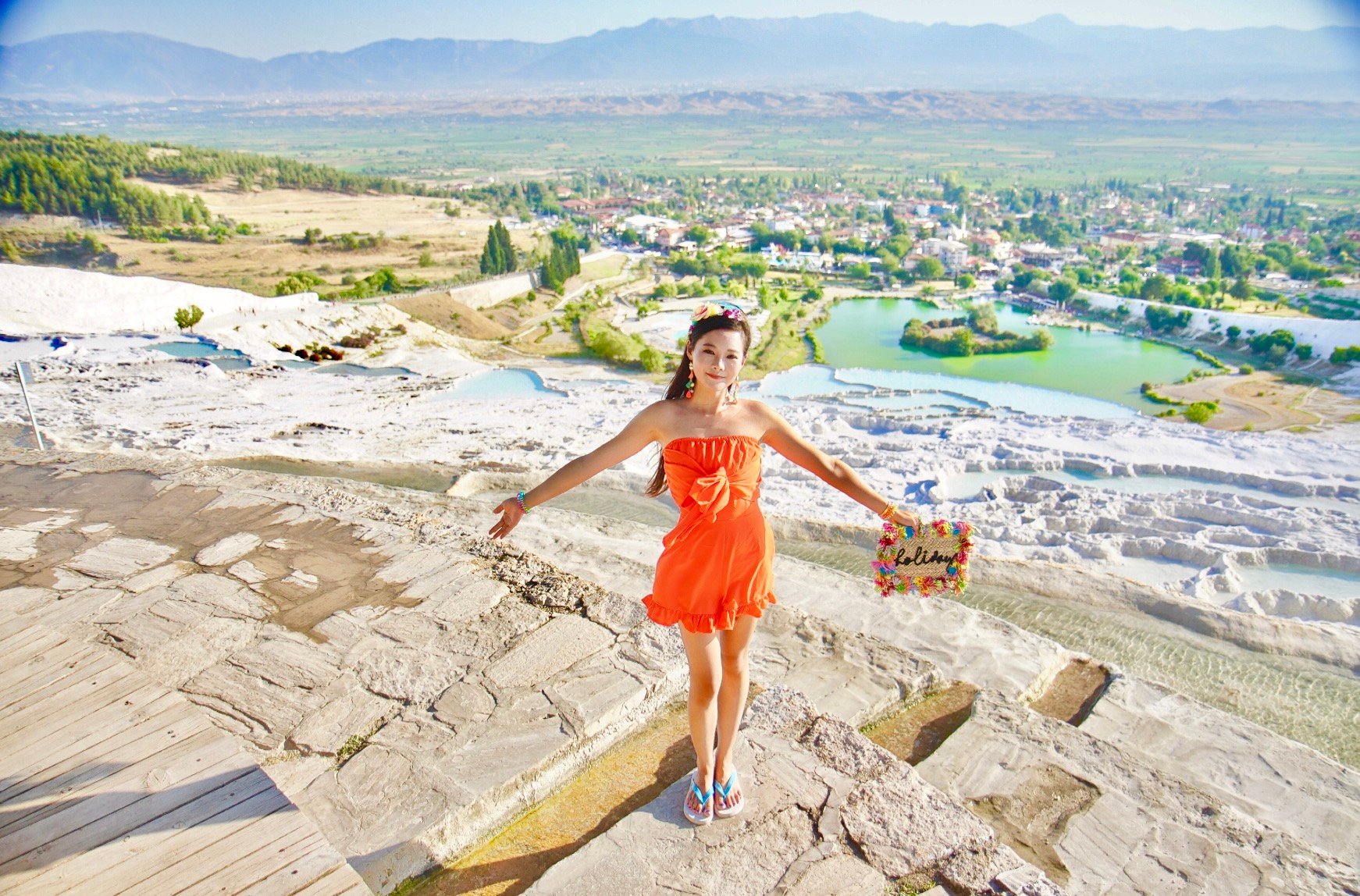
As you can see, this part of the travertine terraces are rather dry. Where the water would have flowed out from the volcanic depths of the mountain, there are now "taps" where the calcium rich water is now diverted to different parts of the travertine(s).
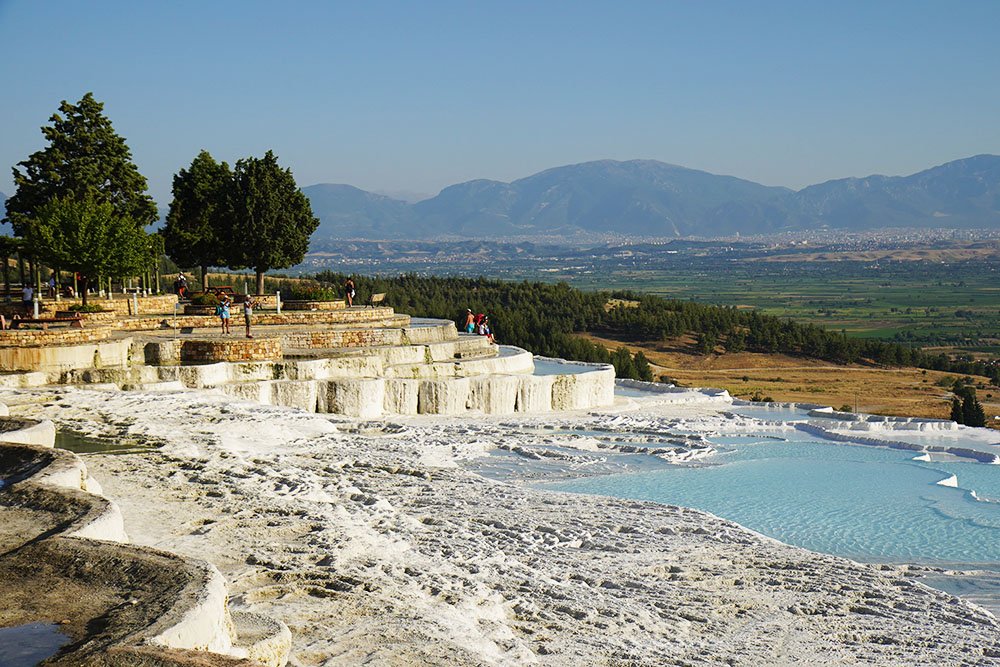

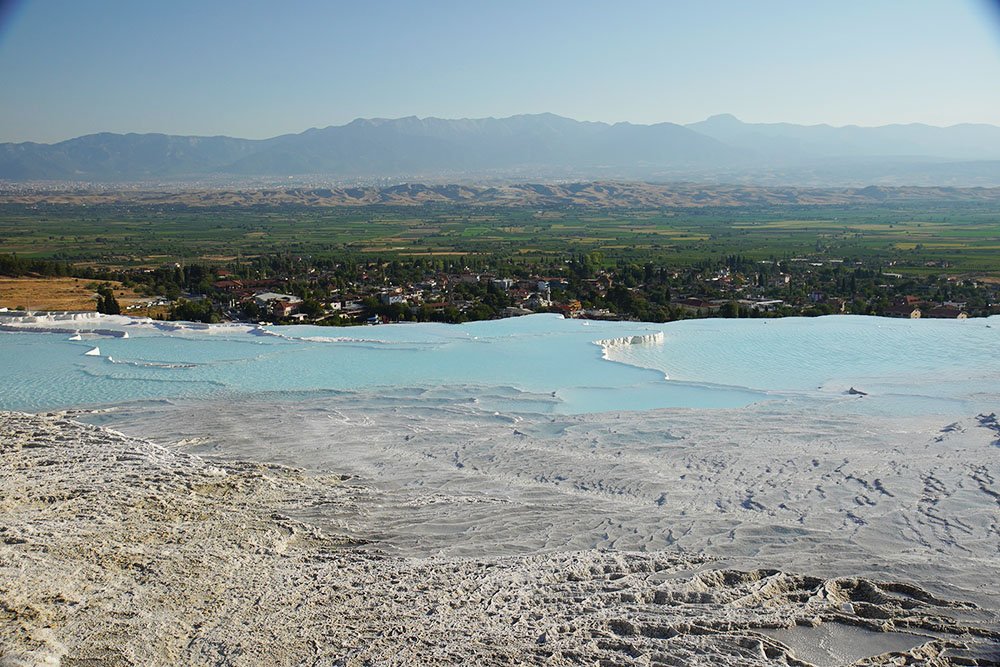
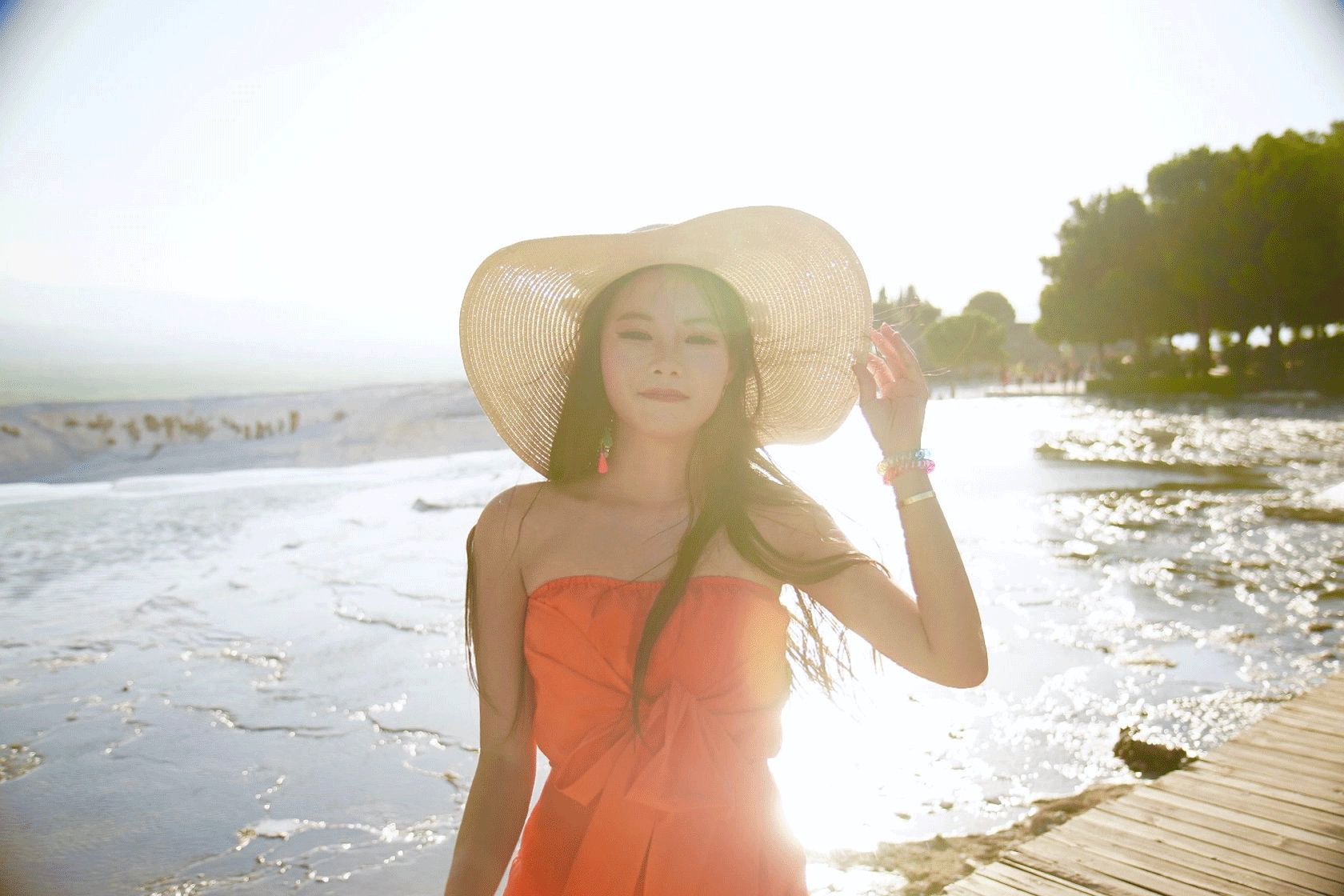
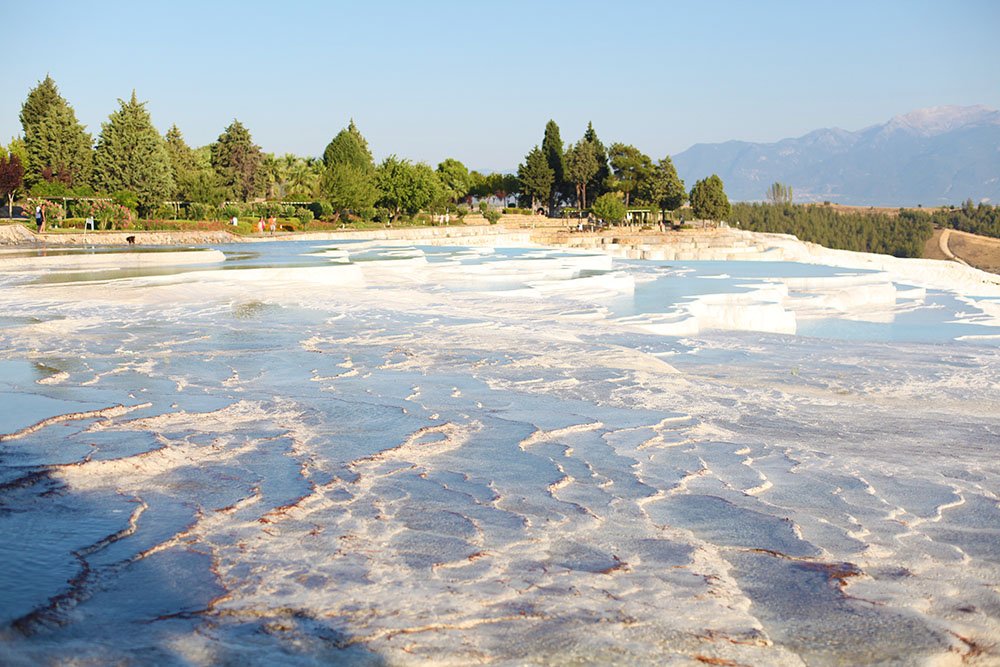


The water actually comes from a vast underground reservoir of water which is heated by volcanic lava. The water has dissolved calcium saturated within it and when it reaches the surface, cools to form a precipitate which combines with the soil on the surface to form the white calcium "cascade" stones which we now call the travertines.
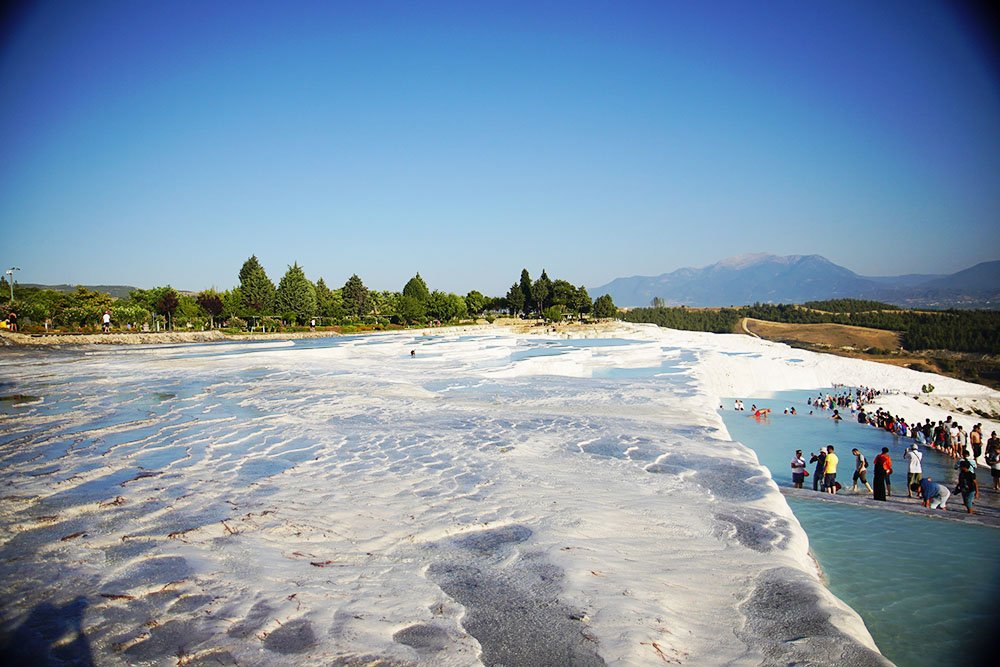
The walls here look very much like cotton and has a bubbly kind of texture. It's hard to believe that they are formed naturally through the perpetual flow of calcium rich water.
I remember walking through the pools of water along the travertine terraces and feeling the heat of the rocks from being cooked against the sun all day, and then cooling down when stepping into the water.
Actually, the surface consists of lots of little calcium rocks which are really uneven. It was quite painful walking in the pools and considerable care has to be taken whilst moving from pool to pool.
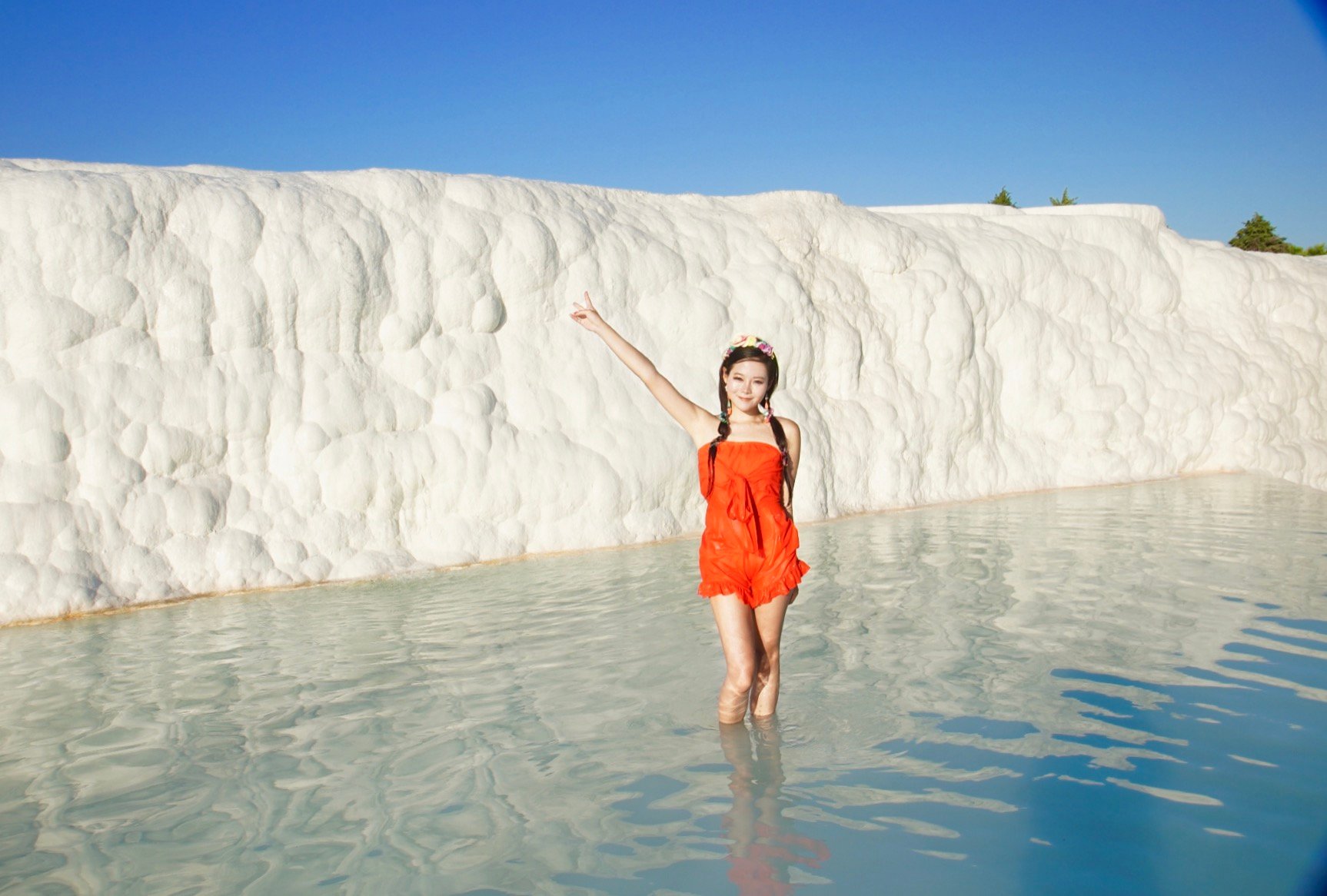
By the afternoon, there are already hundreds if not thousands of people visiting the travertines, and from a distance they look a lot like a line of ants.

I was very lucky to have a few photos taken without others in the frame but the contrary is almost always guaranteed.
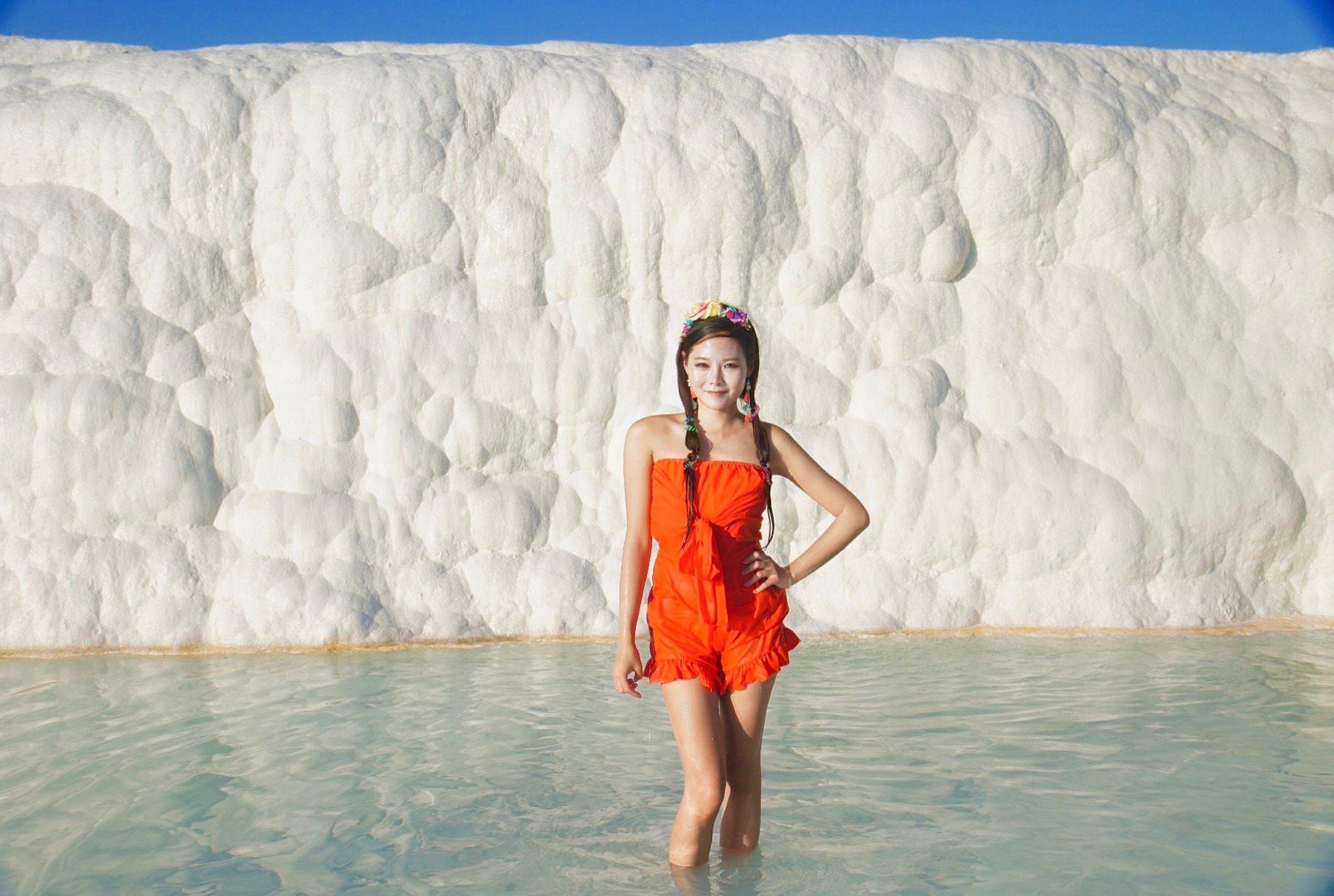
At the top of the plateau, you can see the water running across the surface and smaller mini travertines beginning to form.
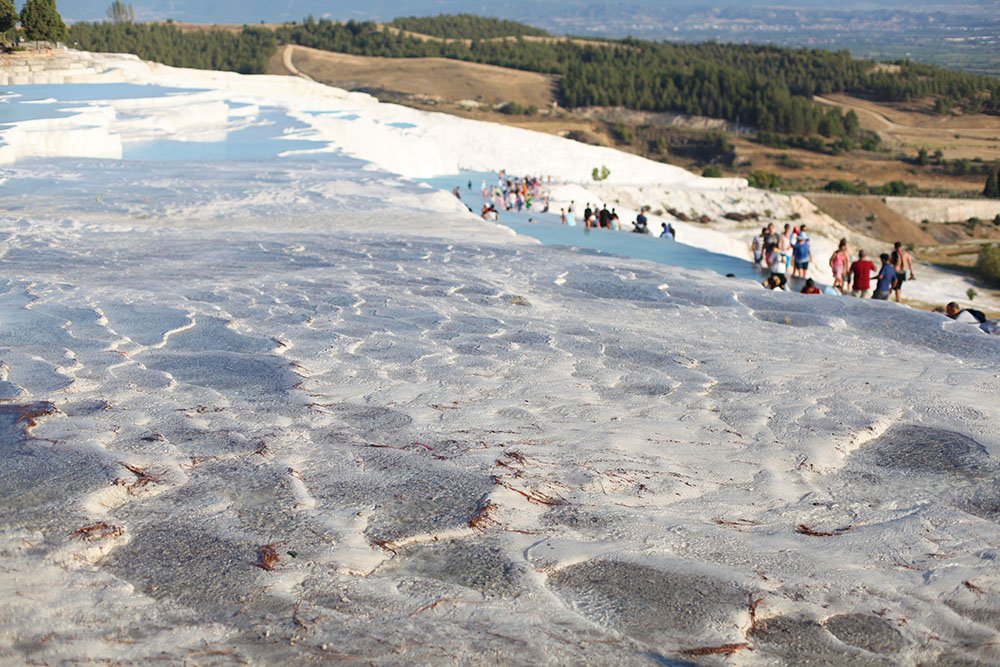
The one area which was accessible to visitors on this day ran all the way down towards the pools down at Pamukkale town.
As inviting as the pools are to bathe in, most people liked to stay on the edge of them and just enjoy the small trickles of water across their feet.
I must say, I agree because the bottom of the pools are so prickly, it can become quite painful after just a short time wading through them with bare feet.

Some of the other untouched areas of the travertines look simply magical. It is hard to believe that for more than two thousand years, people have been coming to this area to enjoy the hot mineral water for it's spa like qualities.
This is also part of the reason why Hierapolis was built atop of the Pamukkale travertine plateaus.
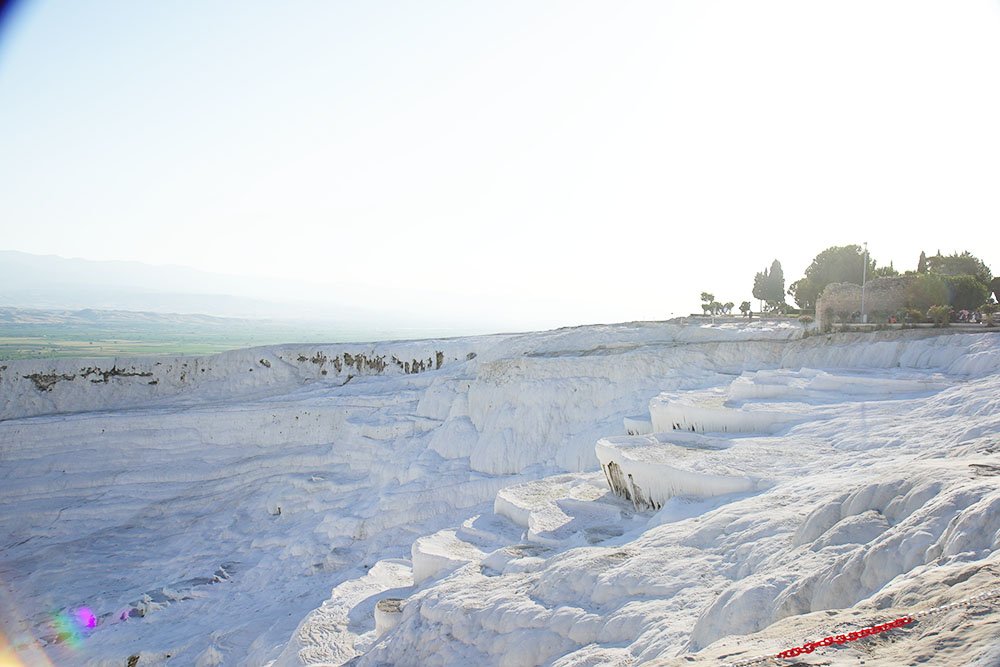
Of course, now that I'm here, I might as well take a much needed cooling down dip. After all, as legend says, the water is suppose to be beautifying and no girl would turn an opportunity to look more beautiful!

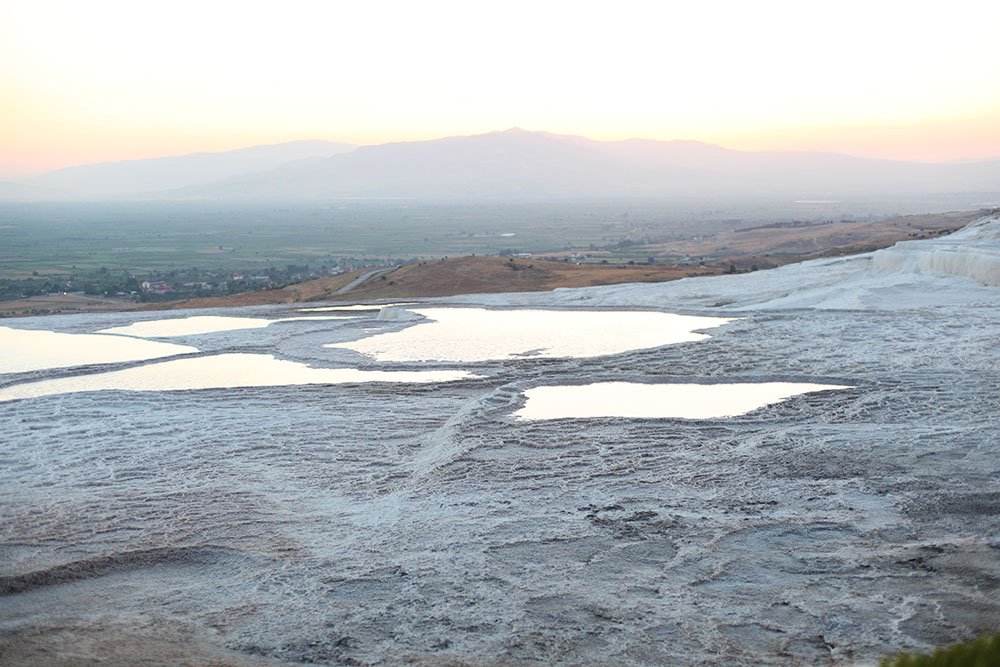
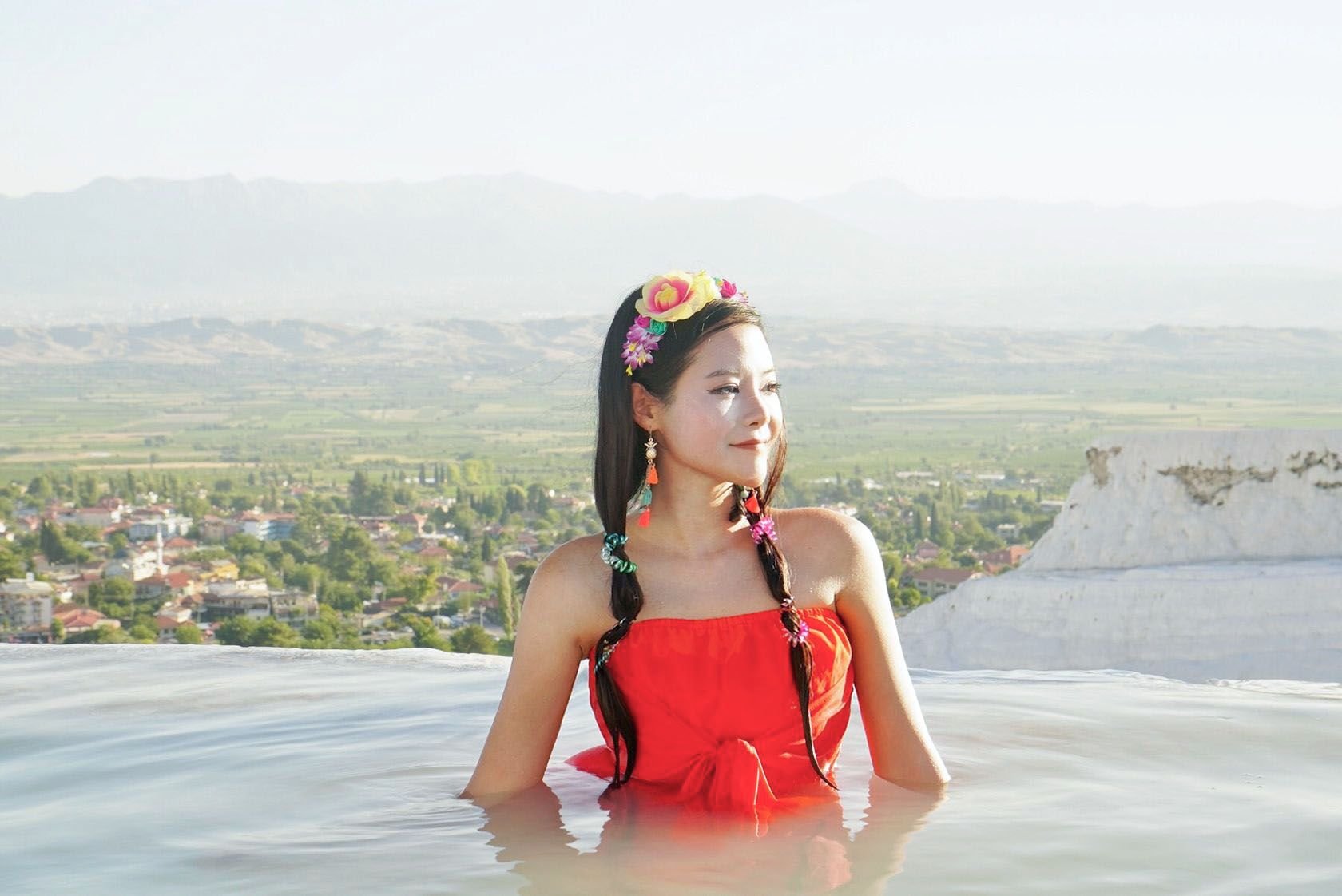
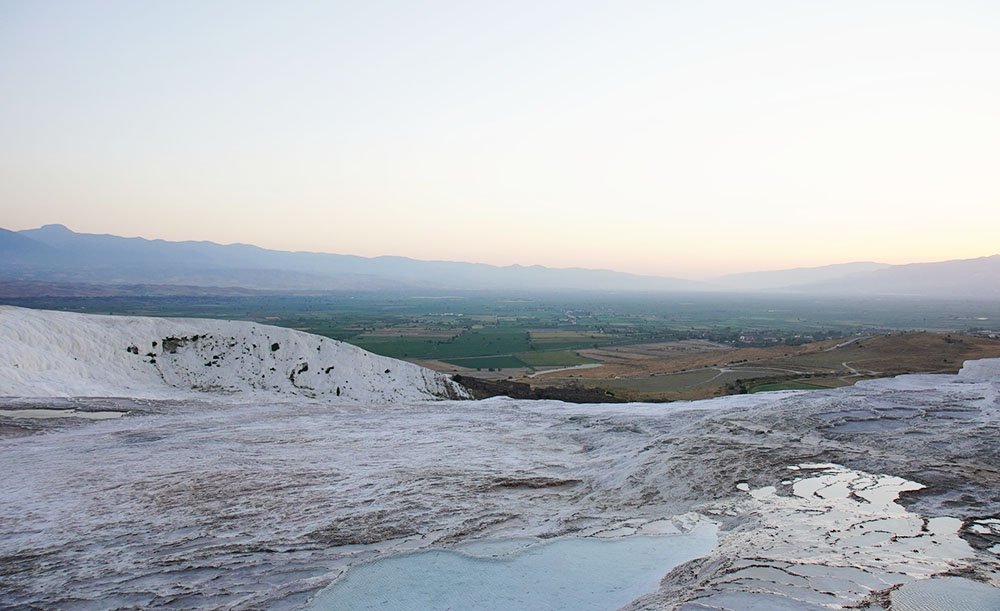
The way the water just flows off the edge of the pools remind me a lot of the "infinity edge-less" man made pools. Except here, they are completely natural!
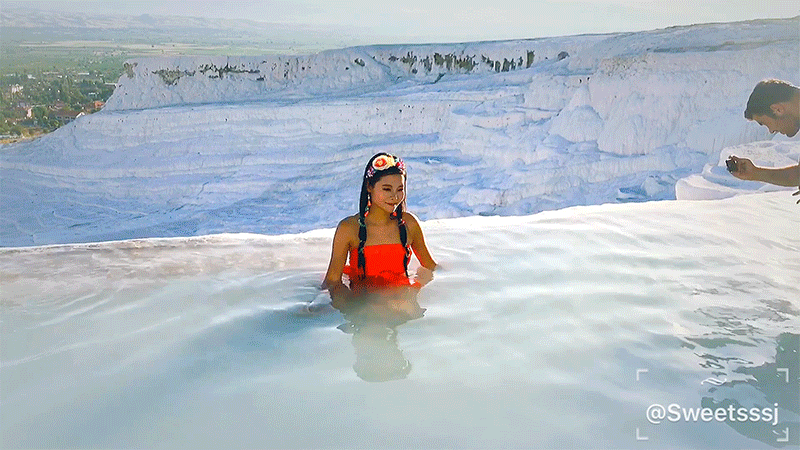
Even though you can't see it very well from pictures, there is actually a constant flow of water across these bubbly cotton like rocks.
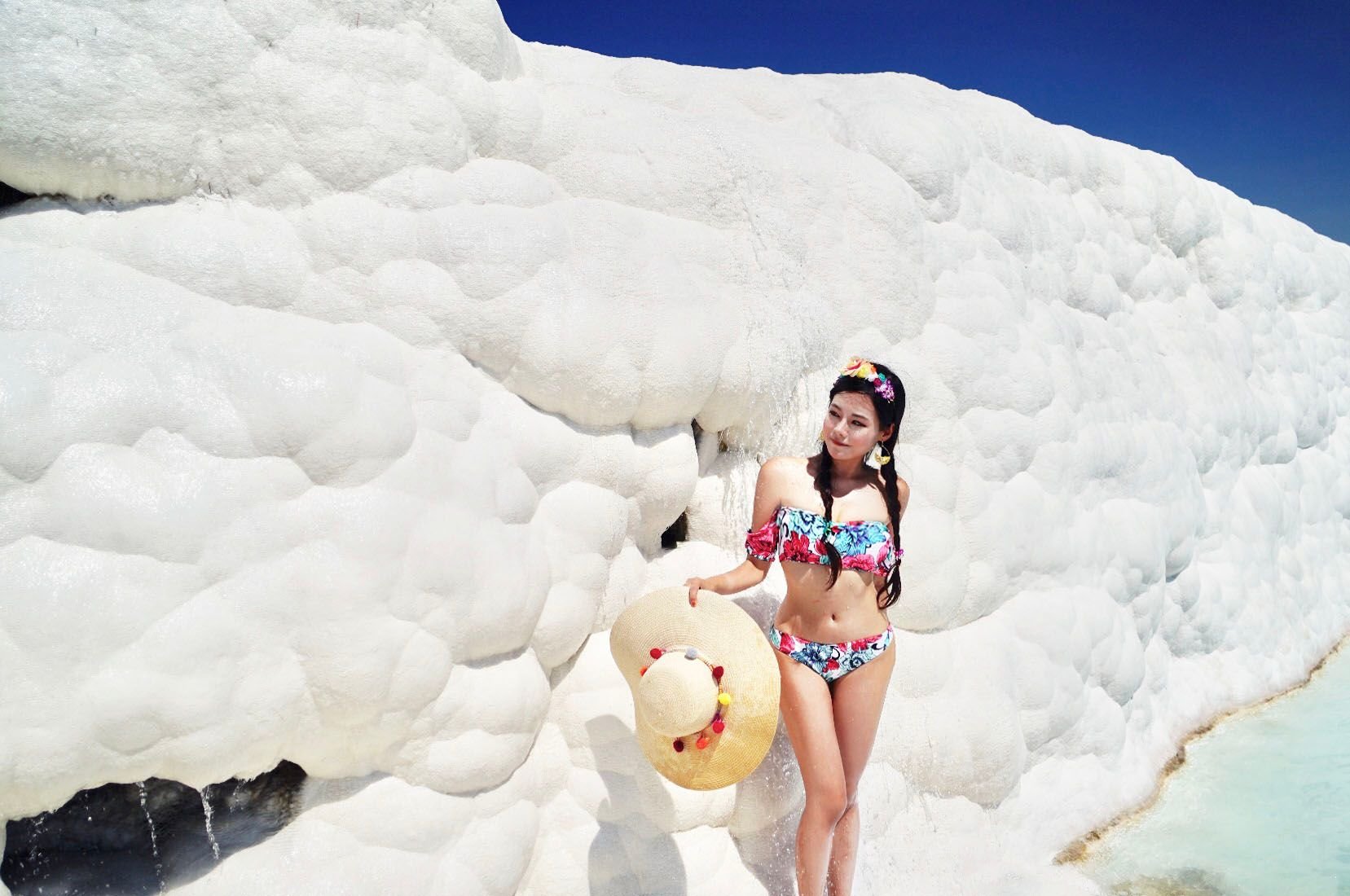
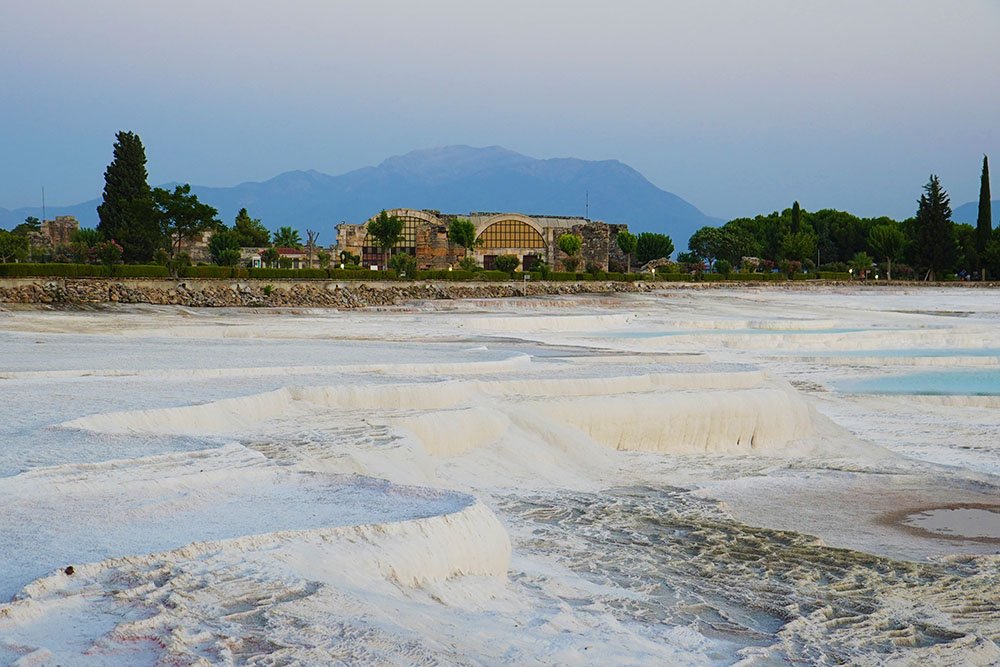
This lovely little girl wanted to take a picture together, I thought her rubber swan was so cute and she reminded me a lot of myself!
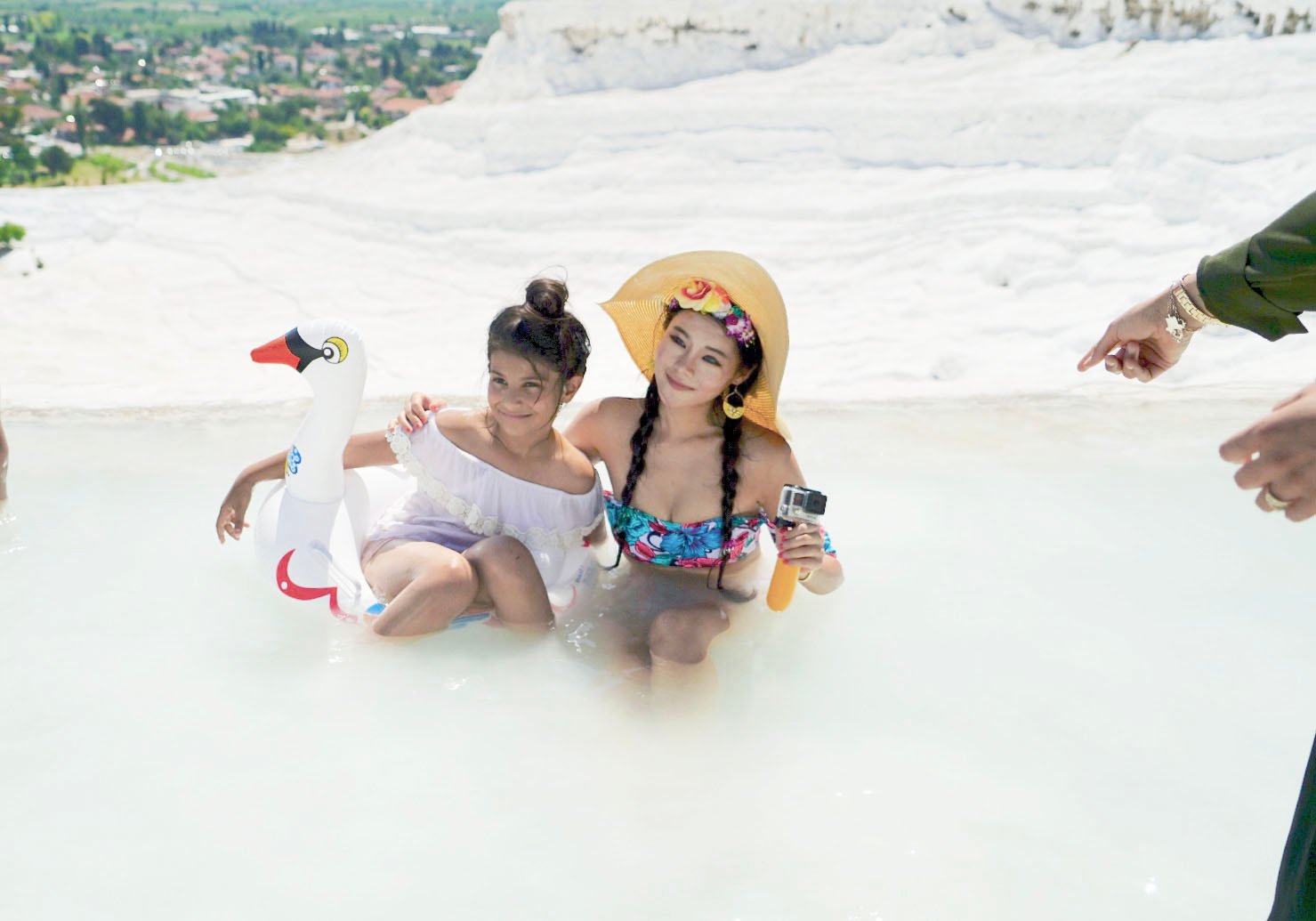


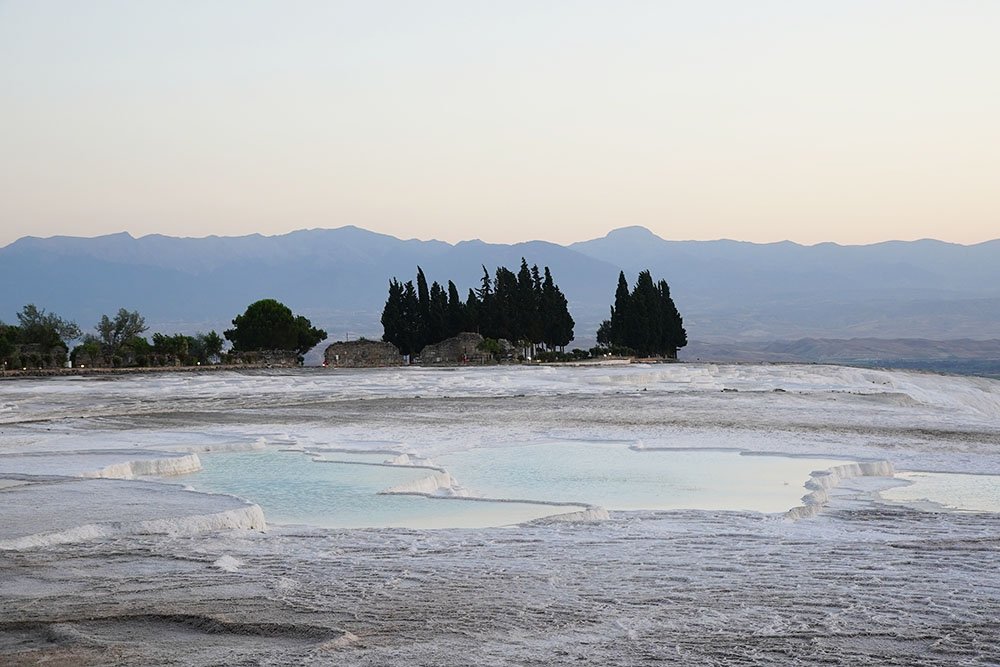
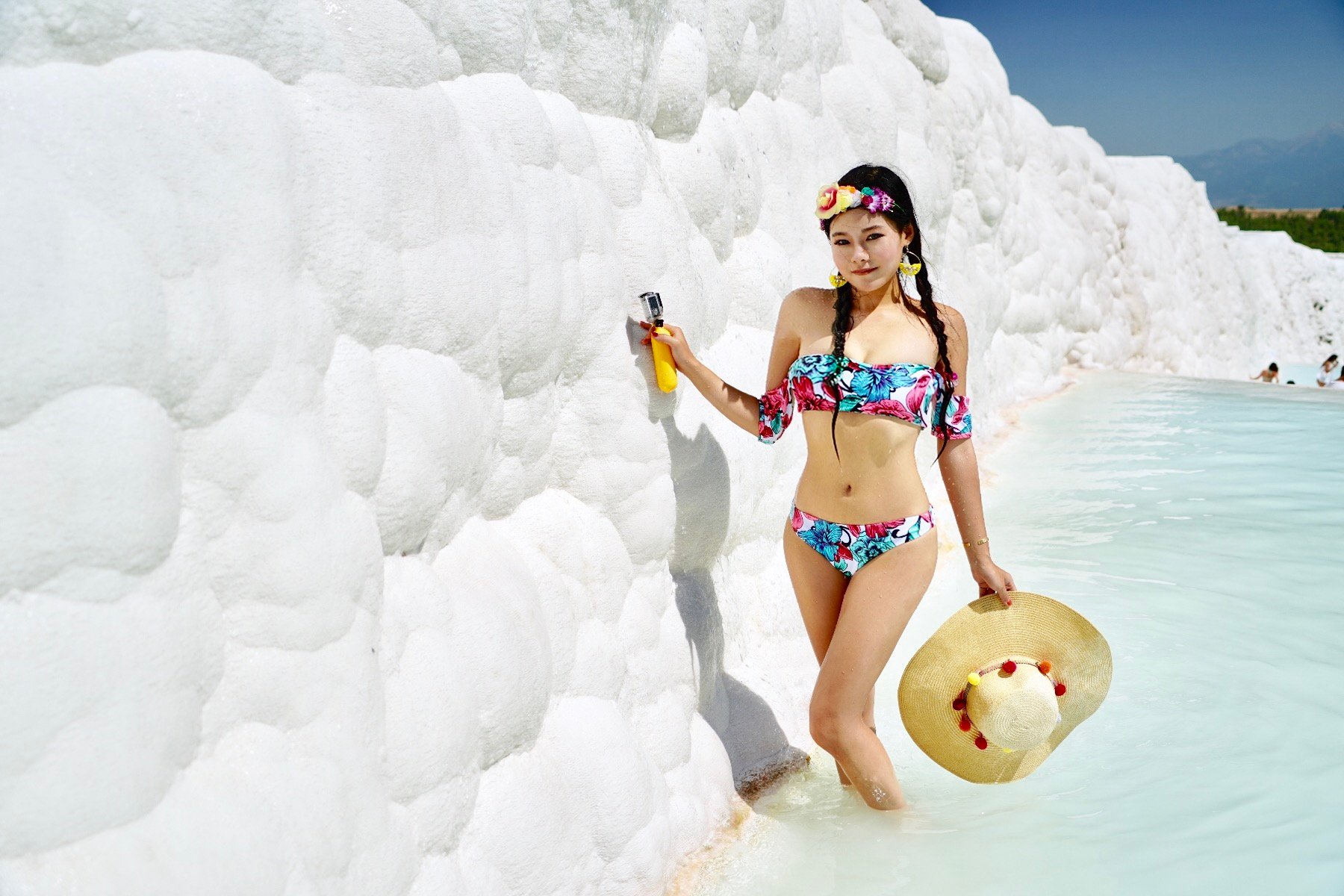

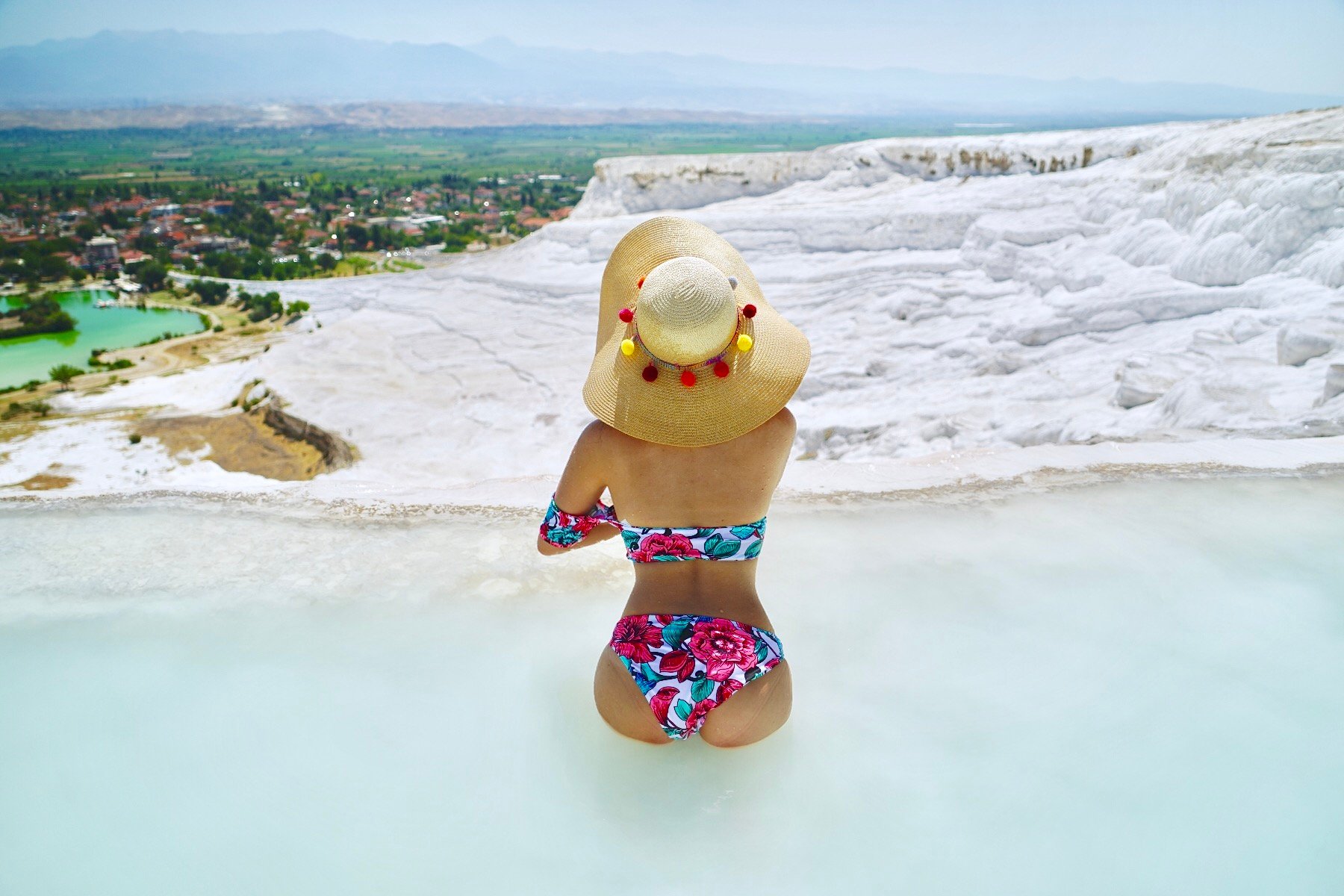
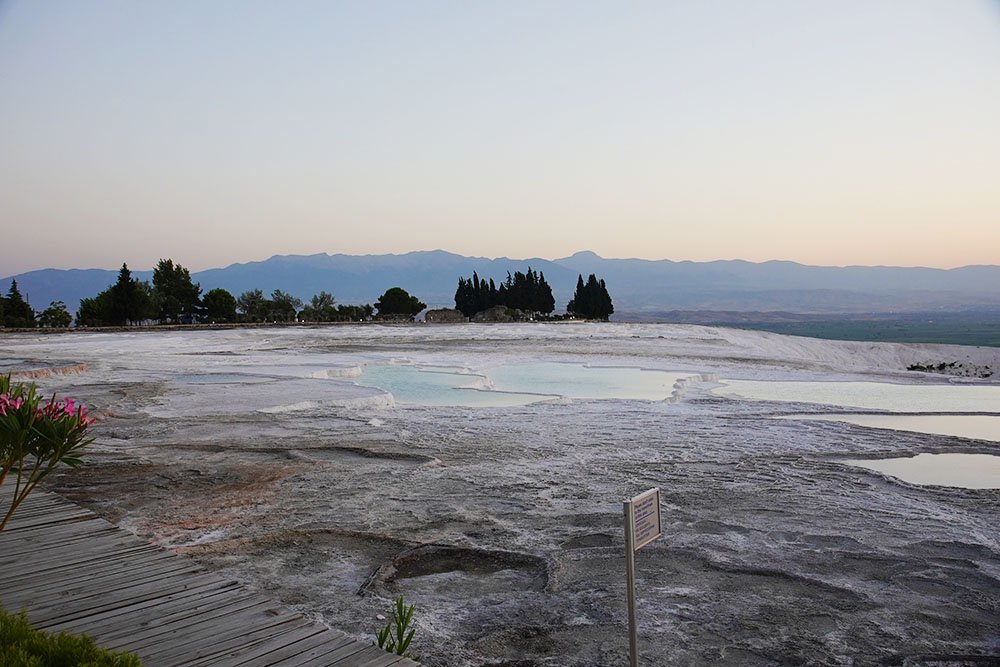
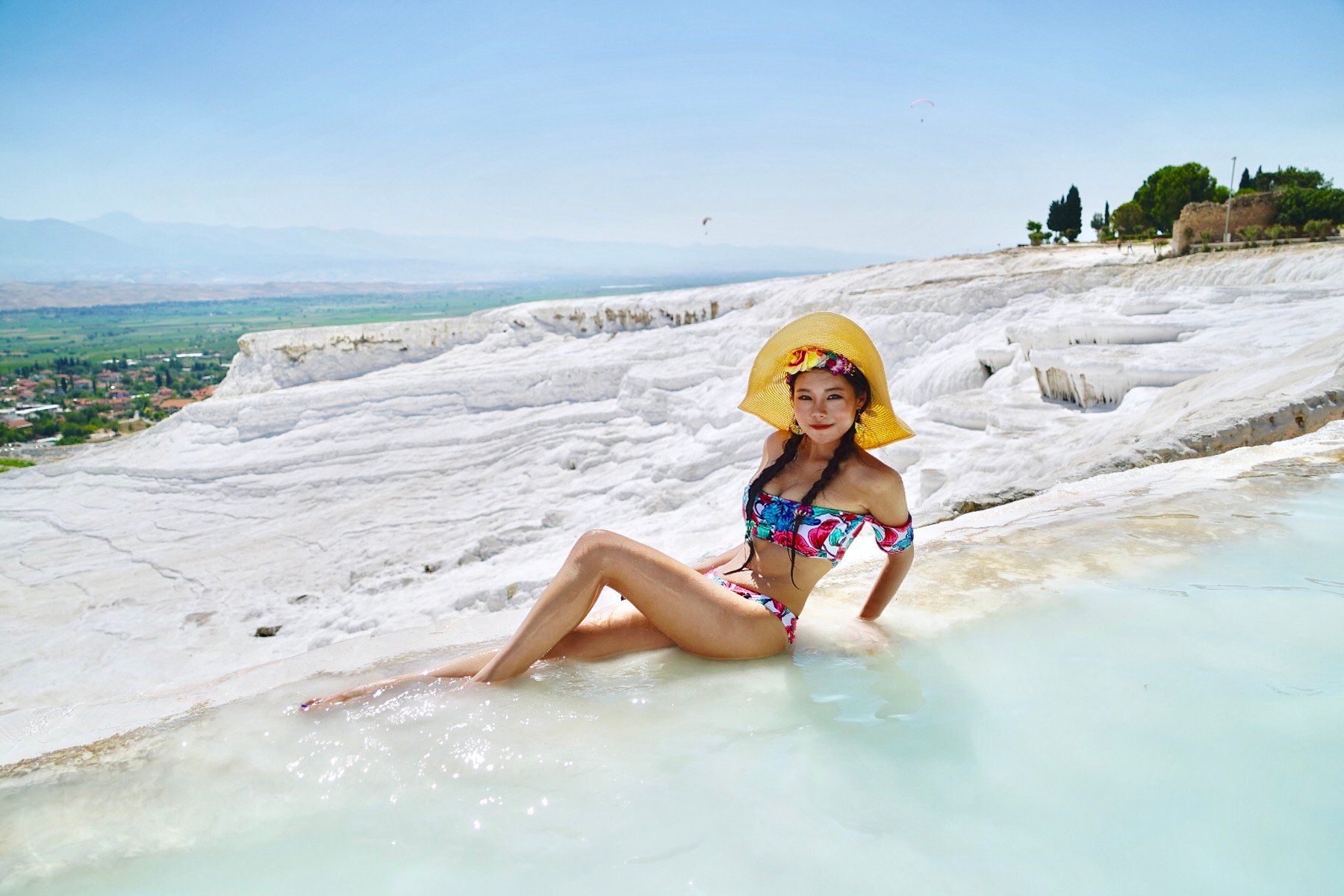


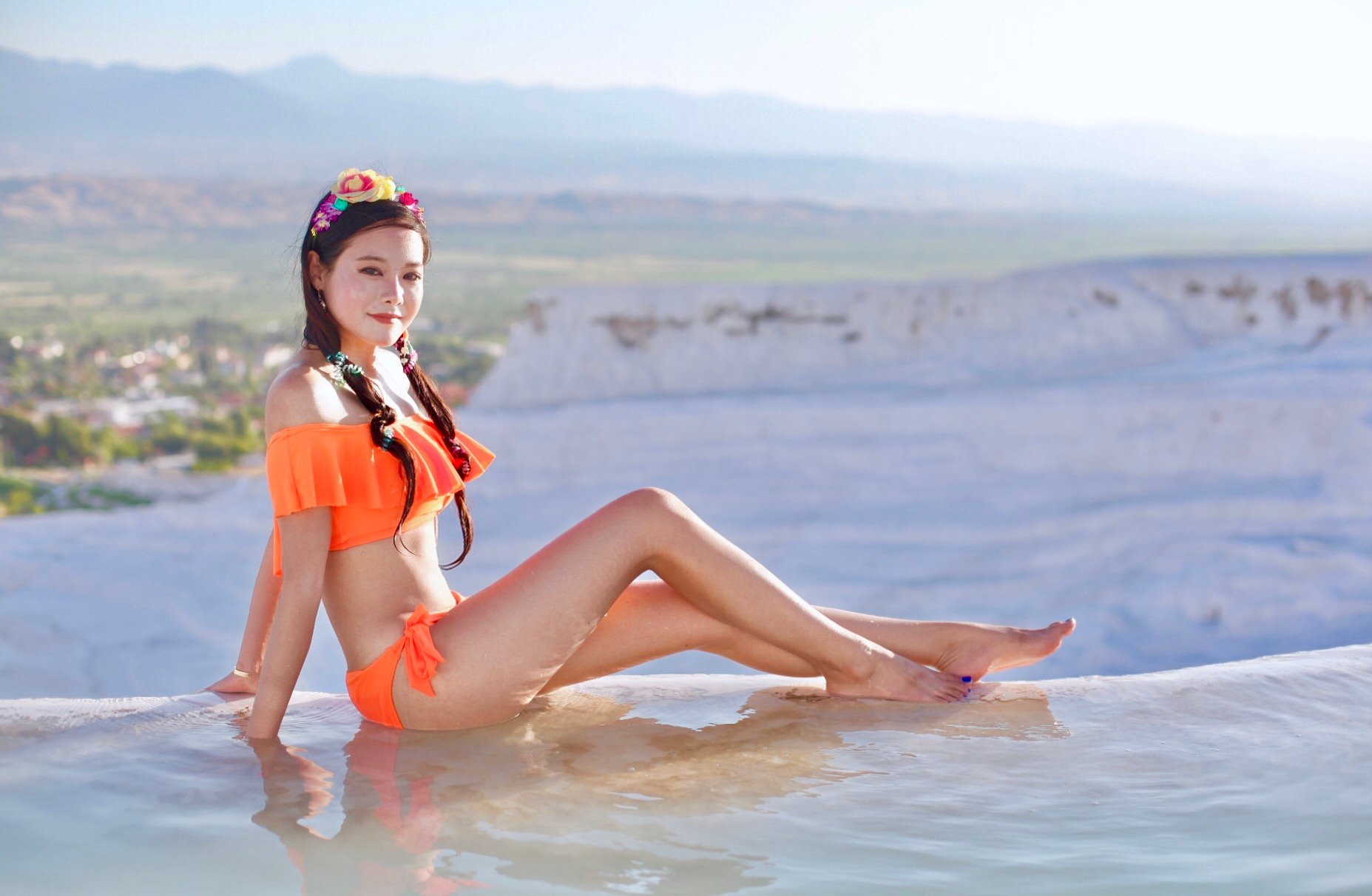
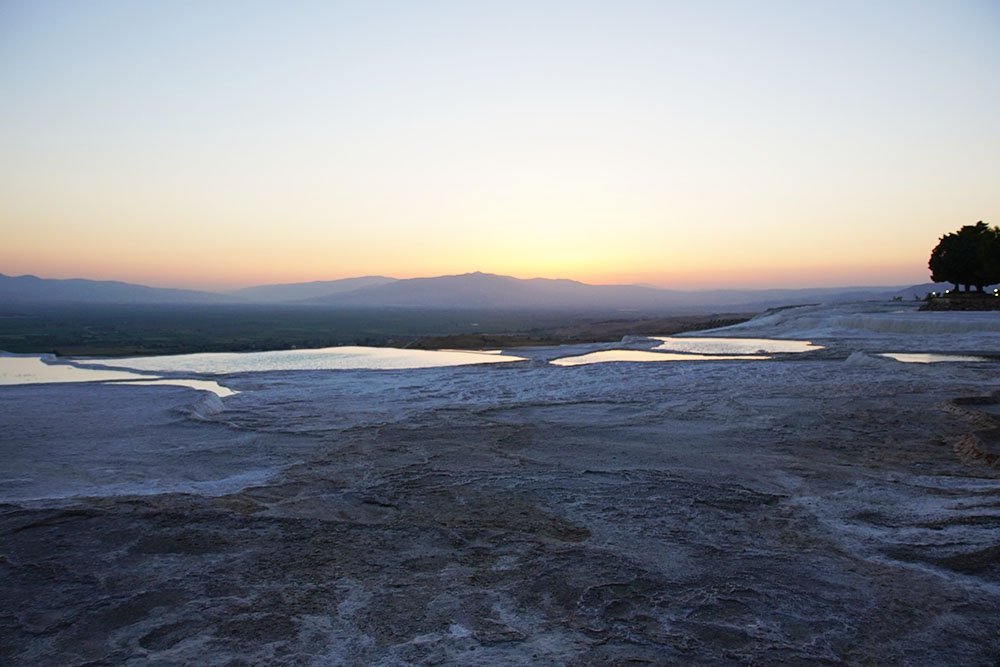
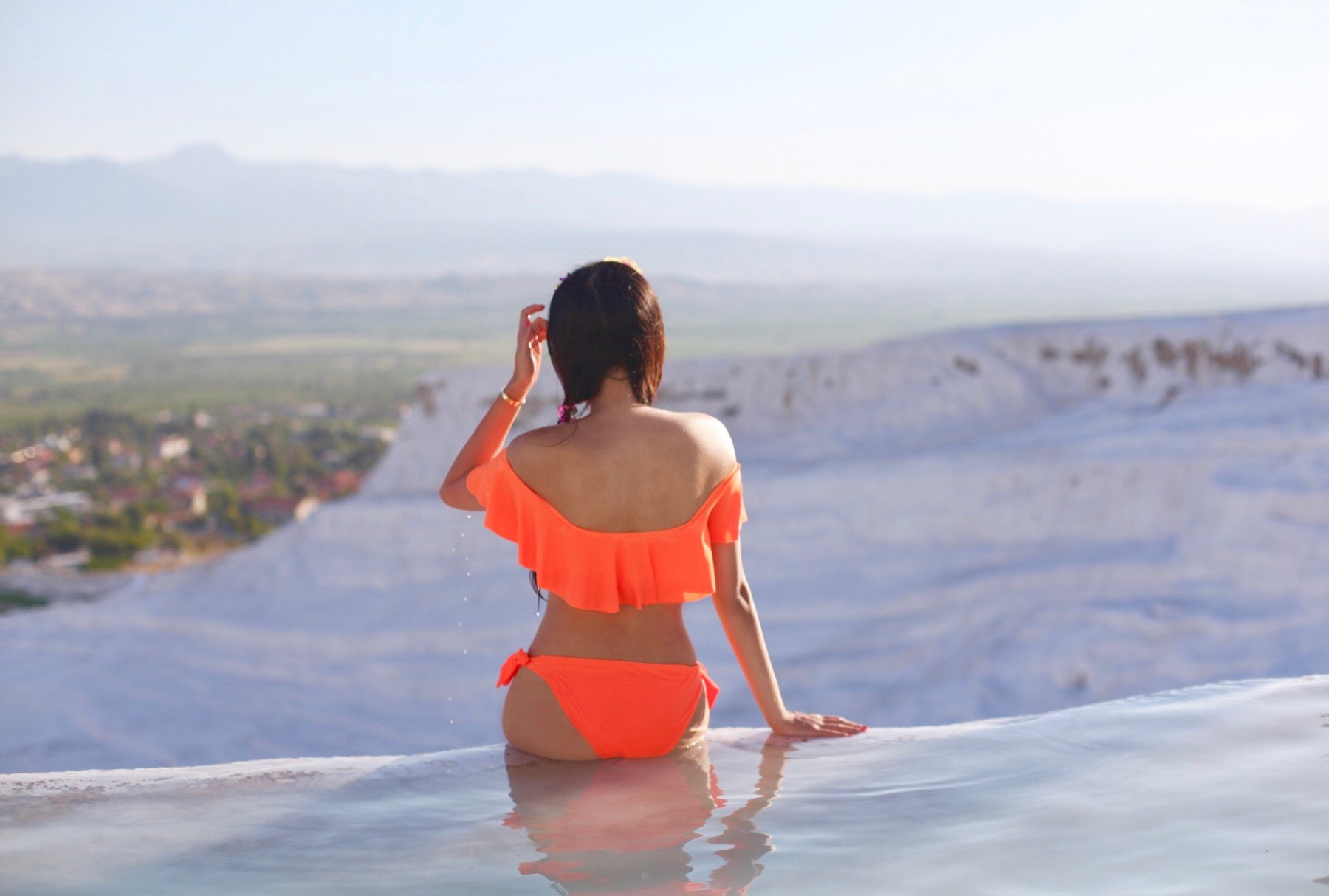

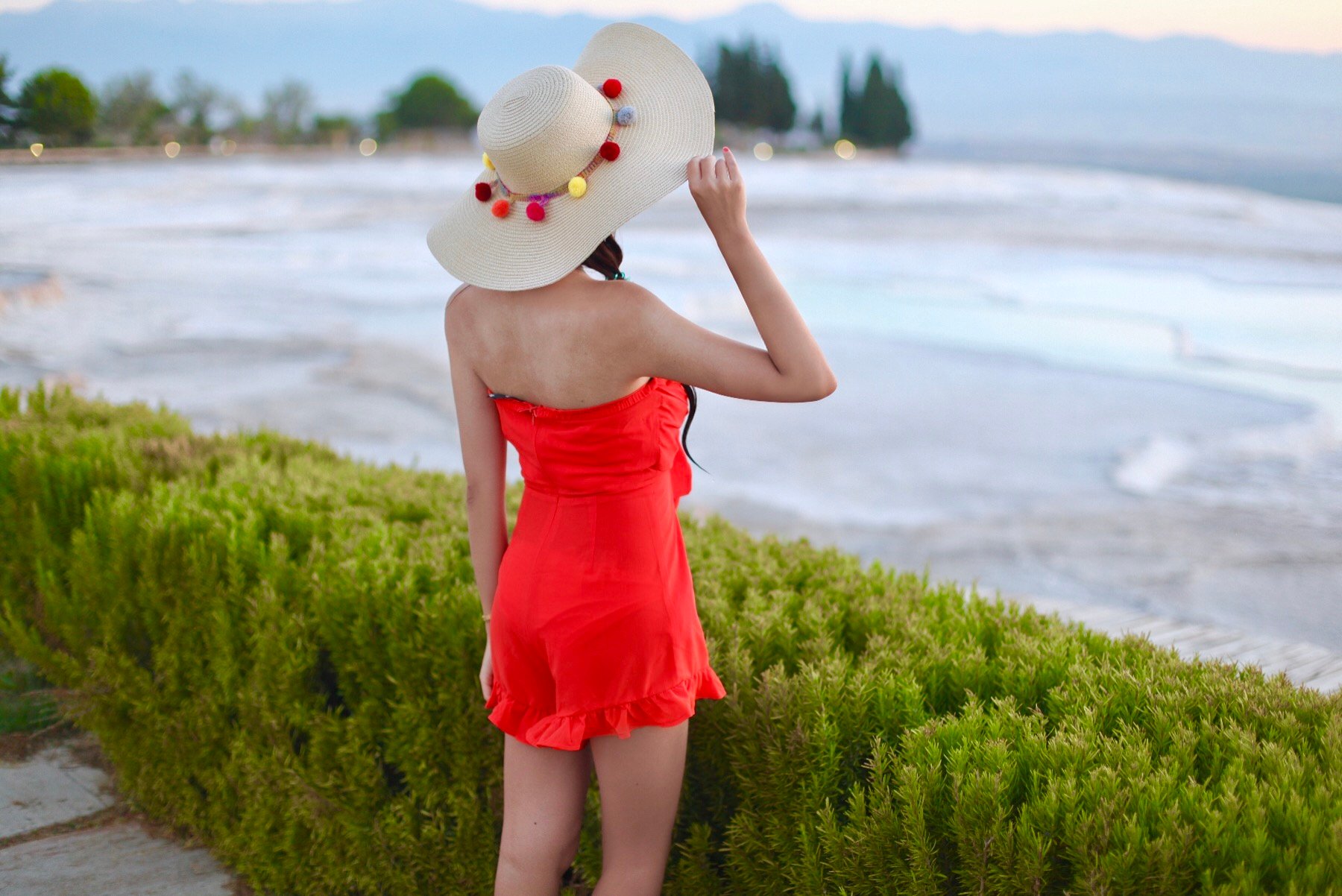
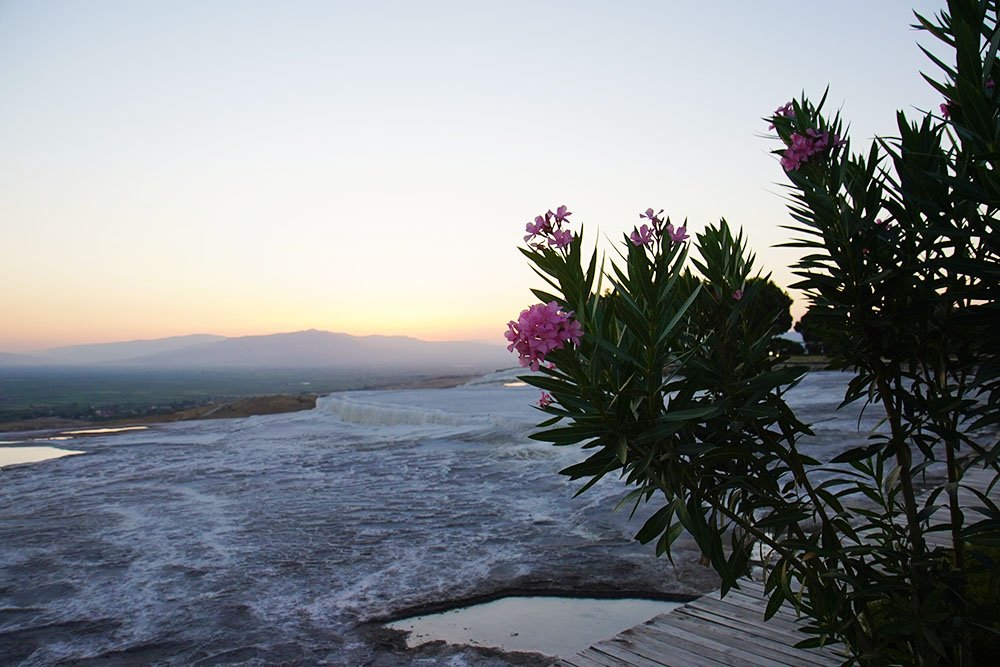
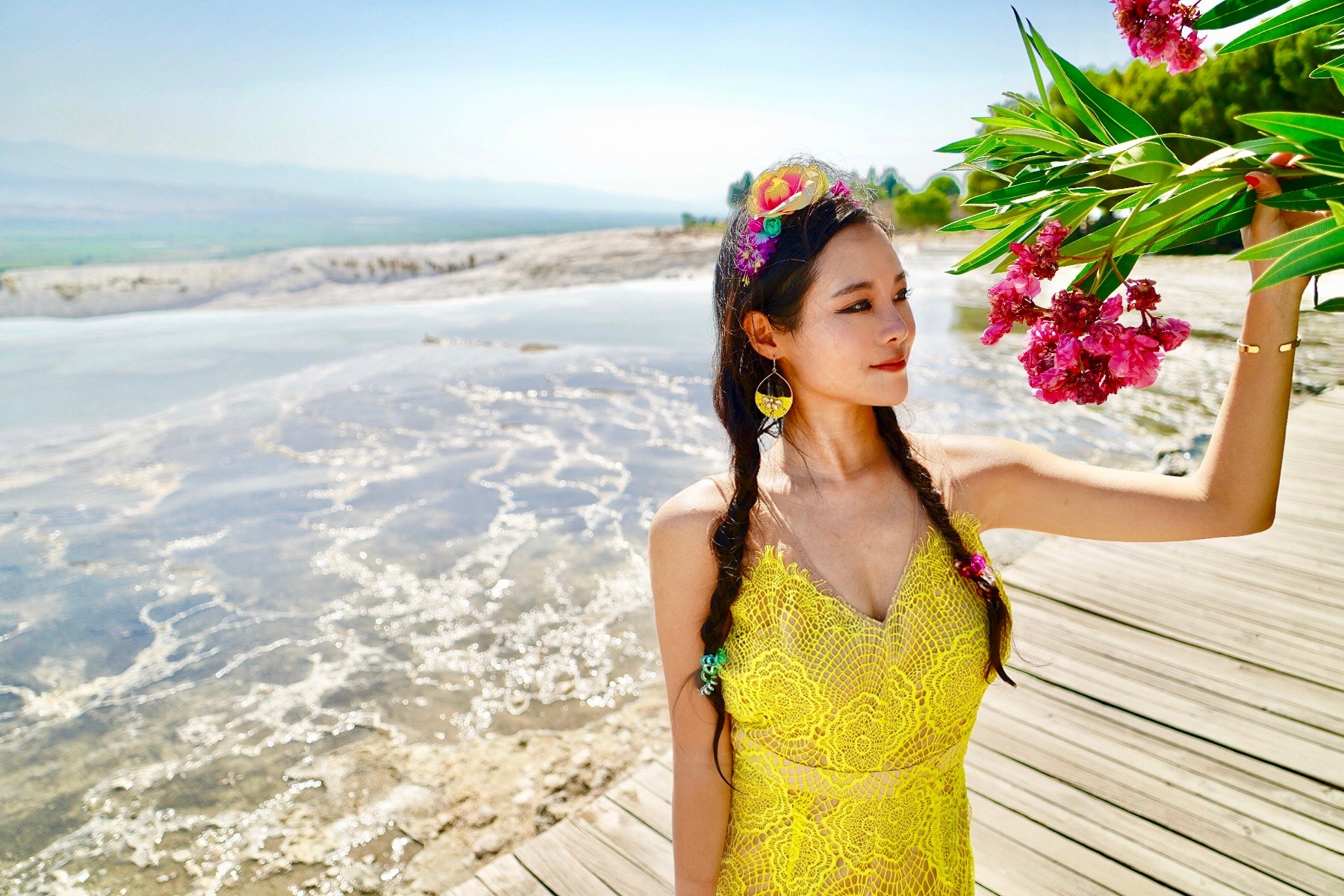
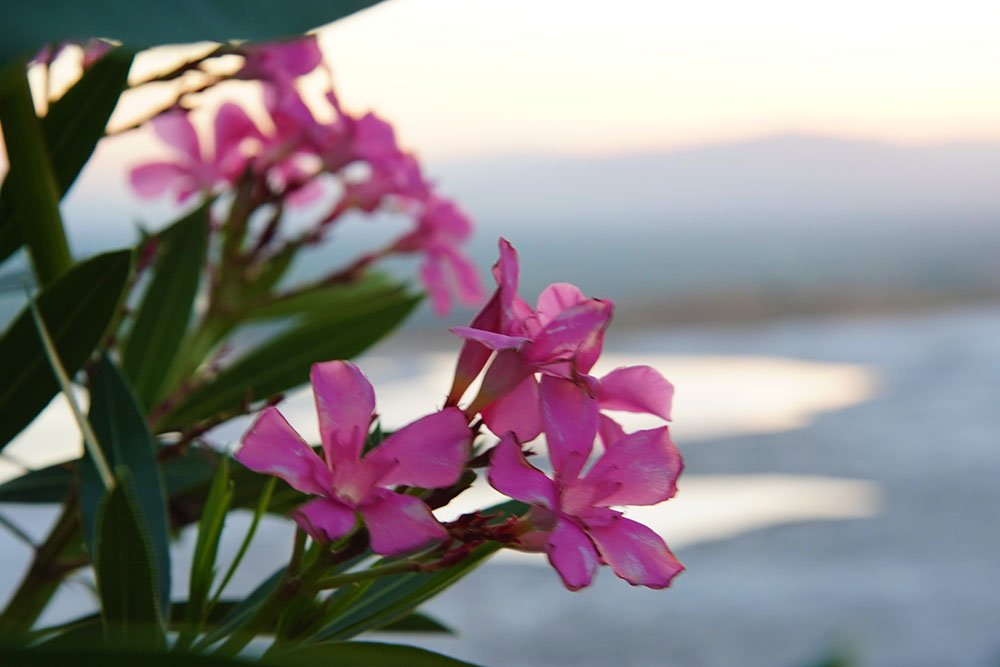
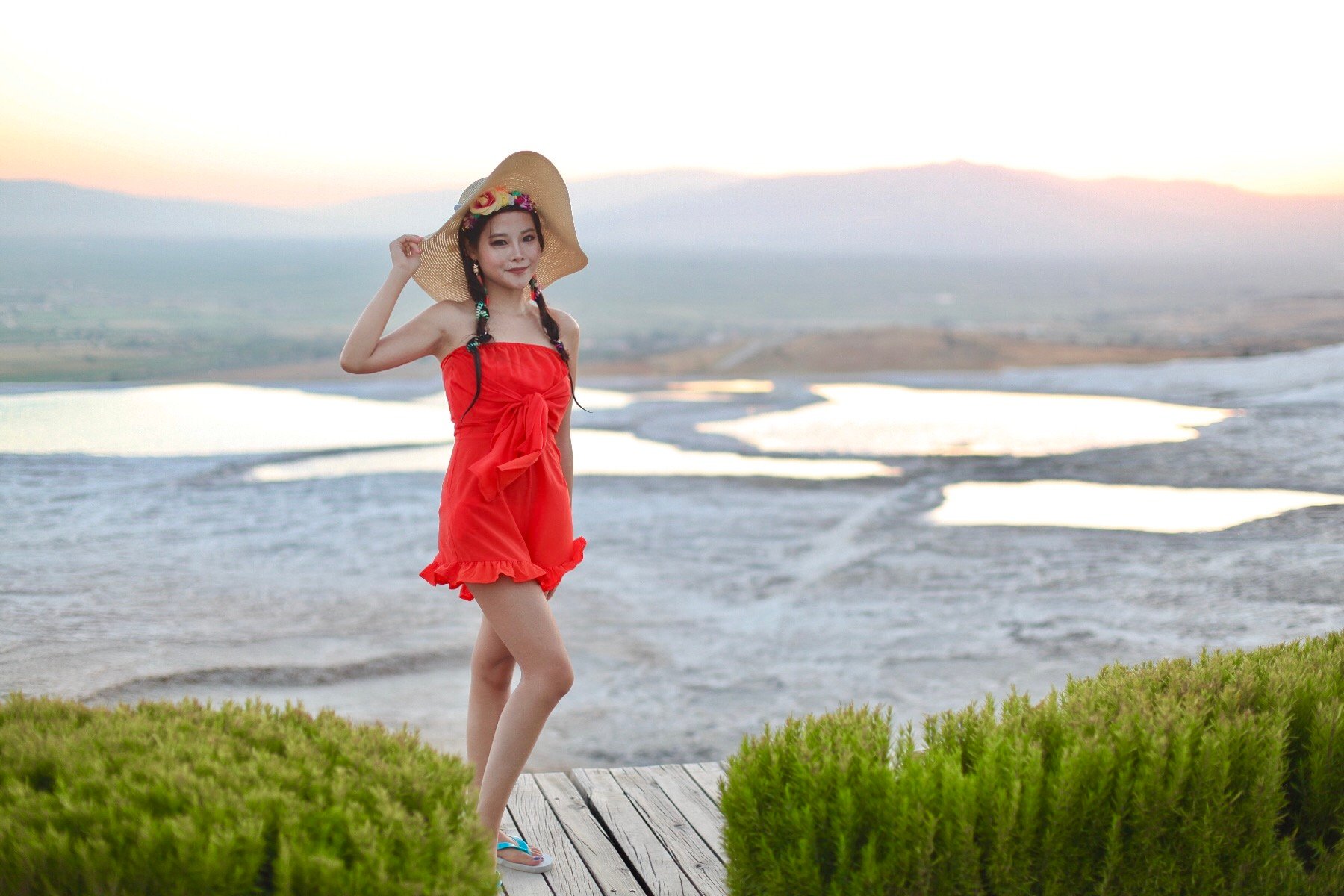
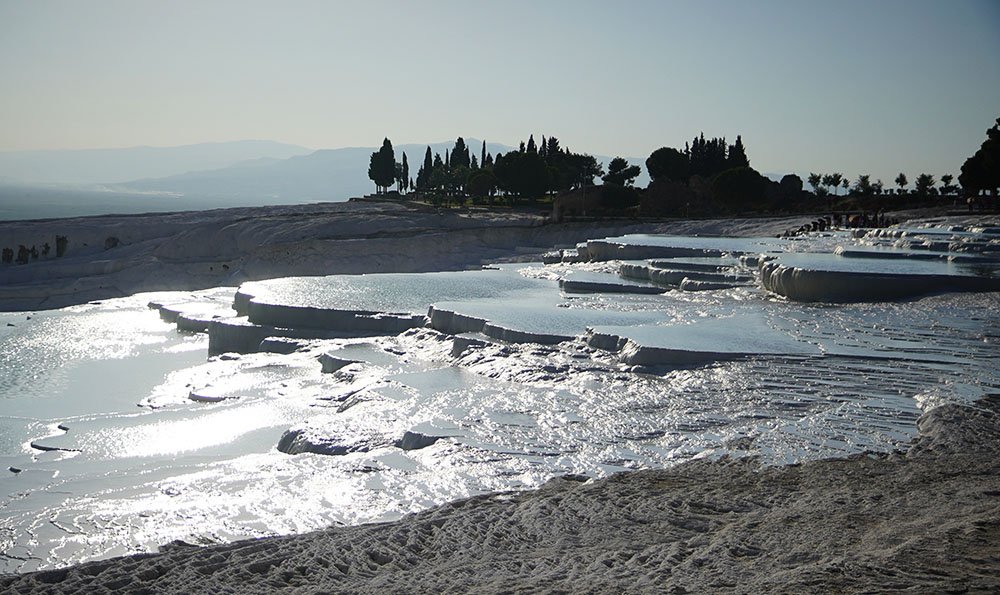

At sunset, the area becomes a lot more tranquil as most of the visitors leave. It becomes a perfect opportunity to just sit and relax. Watching the sun turn from a shade of red to orange, shining the last of it's rays on the silent pools of water.
It was certainly a magical experience and I must say, I am still in disbelief that these rocks are completely natural.
I actually had to come back again the next day because there was still so much to see of Hierapolis and yet I spent most of my first day just wading in the travertine pools.

In any case, the sunset marked the end to a beautiful day at Pamukkale and finally a bit of time to slow the pace down to relax as the day winds to an end and the temperature becomes more bearable.
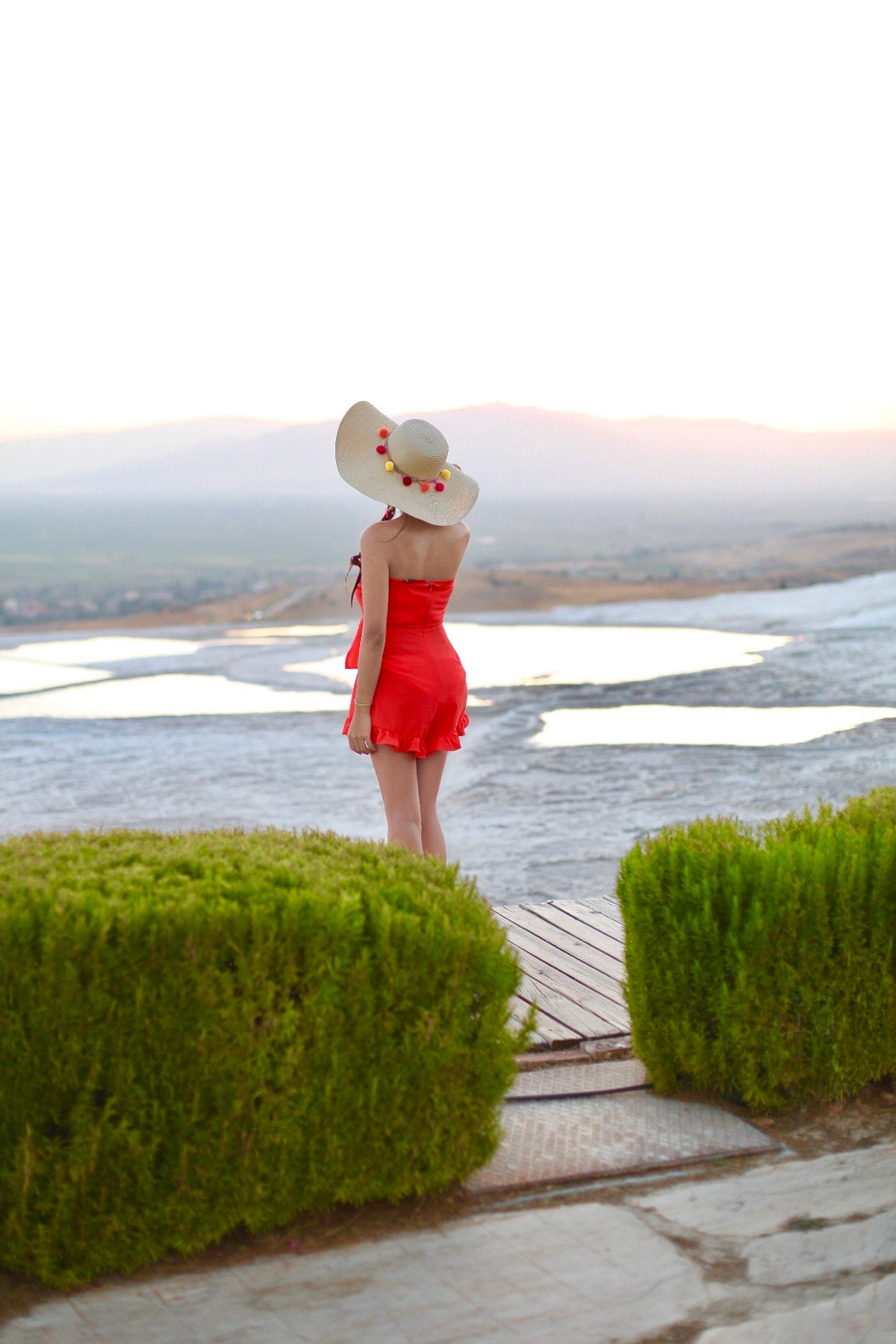
Check out the video below !
I hope you enjoyed my visit to Pamukkale travertines where Cotton Castles really do exist!
In my next post, I will be showing you some of the remnants and ruins of the ancient city of Hierapolis which forms the "man made" part of Pamukkale but equally magnificent to see.
Please upvote my post if you enjoyed it, and remember to follow me to stay up to date with my latest adventures.
As always, please leave a comment to let me know what you think! (I will do my best to reply but please forgive me if I don't manage to get round to replying to you. I do however read all of the comments!)
当决定要去土耳其游玩的时候,我就在各种书籍文章中搜寻关于这个横跨欧亚大陆的神奇国度的故事。当我翻到棉花堡的时候,我被眼前的画面惊讶到了,原来世界上真的有仙境一般的地方,那里有如雪一般白的山丘,好似棉花一样,富含碳酸钙的湛蓝泉水依着地势,萦绕环流在一个个铺满雪白棉花的小池田里。也就是看到了这里的故事,更加坚定了我要去环游土耳其的信念,所以,今天我们来了,带领大家去探索这个知名度最高的山丘上的自然奇怪——Pamukkale棉花堡。曾经有这样一个美丽的传说,诉说着棉花堡的神话:
牧羊人安迪密恩为了和希腊月神瑟莉妮幽会,忘记了挤羊奶,导致羊奶恣意横流,盖住了整座丘陵,远远地看上去就像是一座铺满了棉花的城堡。
棉花城堡位于土耳其登尼资里市的北部,不仅因为拥有这种古怪的好似棉花一样的山丘而出名,也拥有千年的天然温泉池,简直是游客们360度全方位的度假胜地。这块坡地长2700米,高160米。土耳其文Pamuk表示棉花,Kale表示城堡,所以Pamukkale就叫棉花堡。
棉花堡的大门口,有很多奇形怪状的石头,这样的山型地貌我还是第一次见,山上很少长草和树,石头上天然形成的图案,好像雕刻过一样。走在去棉花堡的路上,身边经过了无数古城的遗迹,抚摸一下这些古老的石块,寻找历史的痕迹。沿路上我激动极了,马上就能看到一直魂牵梦萦的棉花堡了。顺着这条羊肠小道一直走,走到尽头,就看见了眼前一层层梯田,与众不同的是,这梯田像是由棉花制作的,原来上帝真的是个大艺术家呀。
你一定会很好奇,这白色的岩石是哪里来的神物,其实它们是以碳酸钙为主要成分的“钙华”。下雨的时候,雨水渗入地下,经过漫长的循环又以温泉形式涌出,在这个过程中,就溶解了大量岩石中的石灰质和其他矿物质。你可能接下来会疑问,那这一片片棉花小池里的水,又是从哪来的?这片土地天然形成的温泉会顺着山坡流淌而下,流进了棉花池里,含钙的温泉水里,石灰质沿途也沉积下来,就形成了眼前一片片阶梯状的梯堤景观。仔细看看这些水池,并不是每一个池里都有水,有些没水的池子,被太阳照的越发白亮了。我们是午后到达的,火辣的太阳照射下,这些白色岩石好像变成了天然的反光板。我坐在这一层层梯田前,感觉雪白的梯田,配上湛蓝的温泉水,还真有点像希腊圣托里尼的经典蓝白景致呢。而我自己,感觉瞬间穿越到了冰天雪地的南极,只是这次我要穿着比基尼勇敢的走进雪地里了,这个场景会不会骗倒一大批人呢。
从山底到山顶,有着大大小小不少这样的温泉池,我迫不及待的脱了鞋,想走进这可爱的温泉池里浸泡一下健康水,据说这里的温泉水对于皮肤和骨头都好,有助于预防高血压,肾结石,帮助血循环和消化等等,女生泡一下会变美,男生泡一下骨骼更强壮。进了水池,感觉真凉爽呀,只是池底的岩石还挺刮胶的,有些还滑溜溜的,所以要十分小心的走路。就连这里的泥巴也含有丰富的碳物质,很多人都把泥巴抹上身,变成了一个个雪白的人。另一个绝对不能错过的,就是这里的日落了。在太阳火辣的时候,整个棉花堡是一片花白的,但是到了日落时分,这些深浅错落有致的小梯田池,突然折射出不同的颜色,瞬间就变成了五光十色上帝的调色盘。今天这雪地里穿比基尼,棉花堡上玩棉花的神话景致就跟大家分享到这里吧,之后还有更多有趣的土耳其故事要和大家分享。

